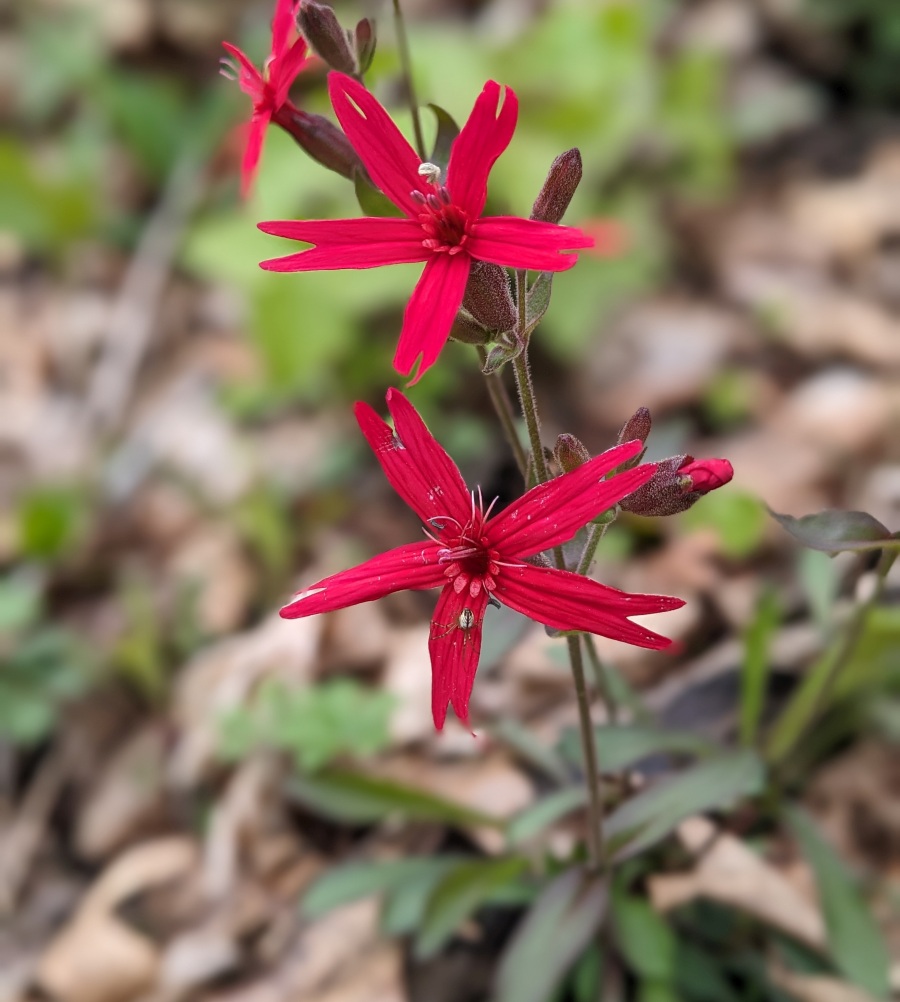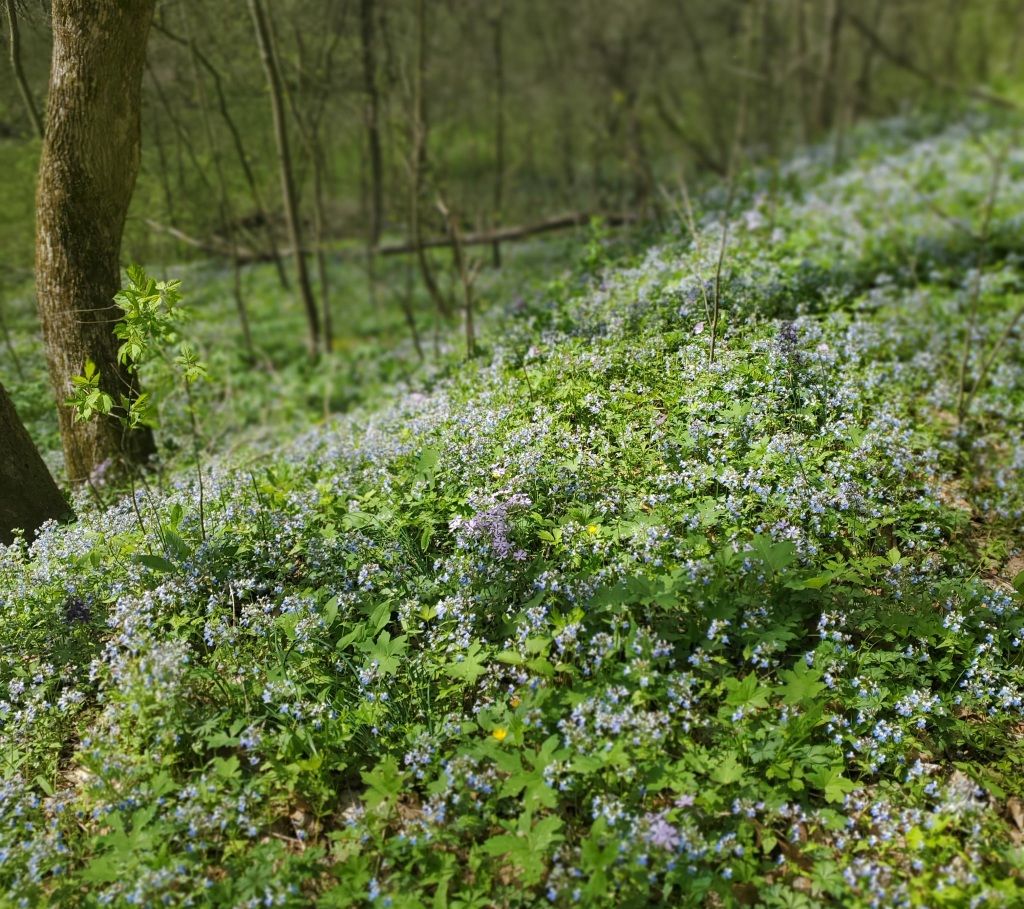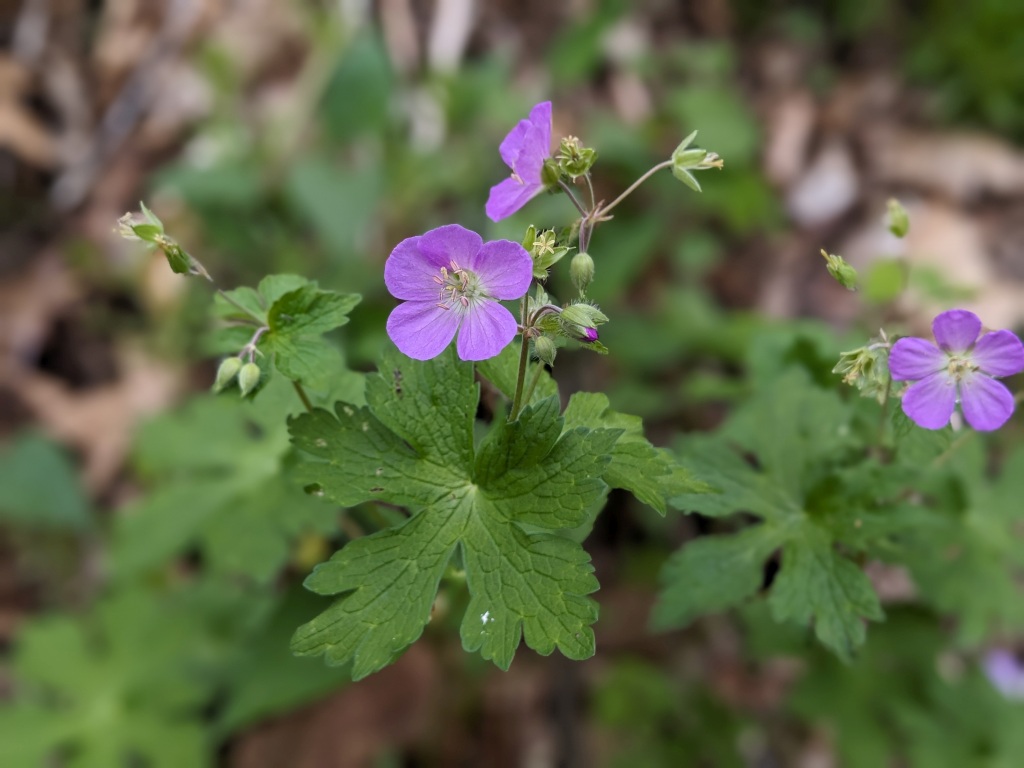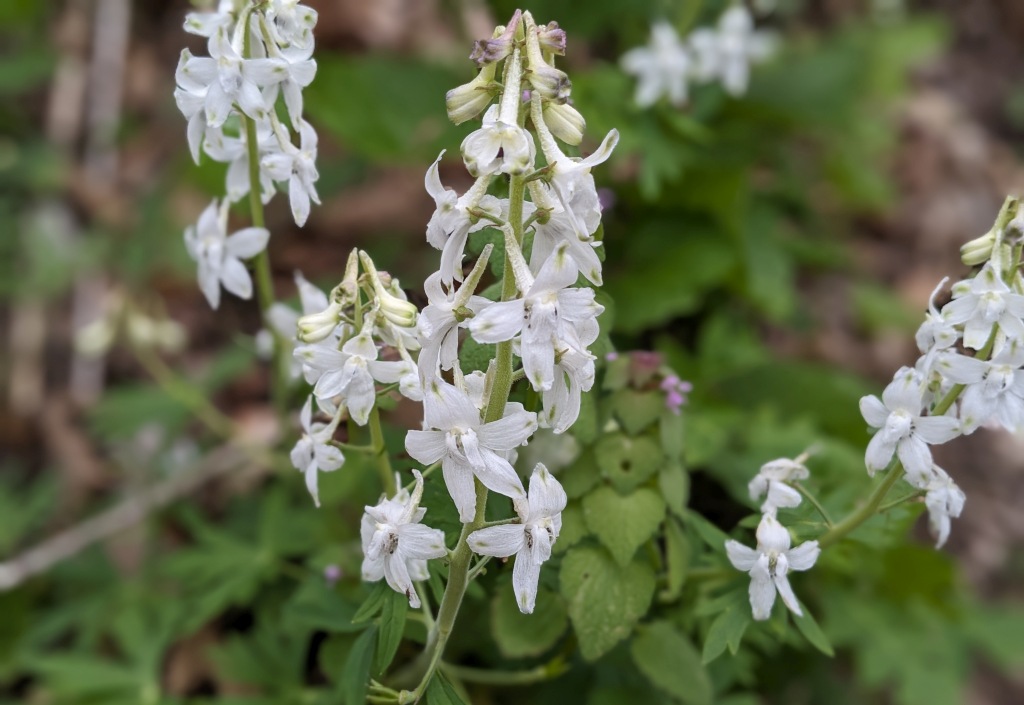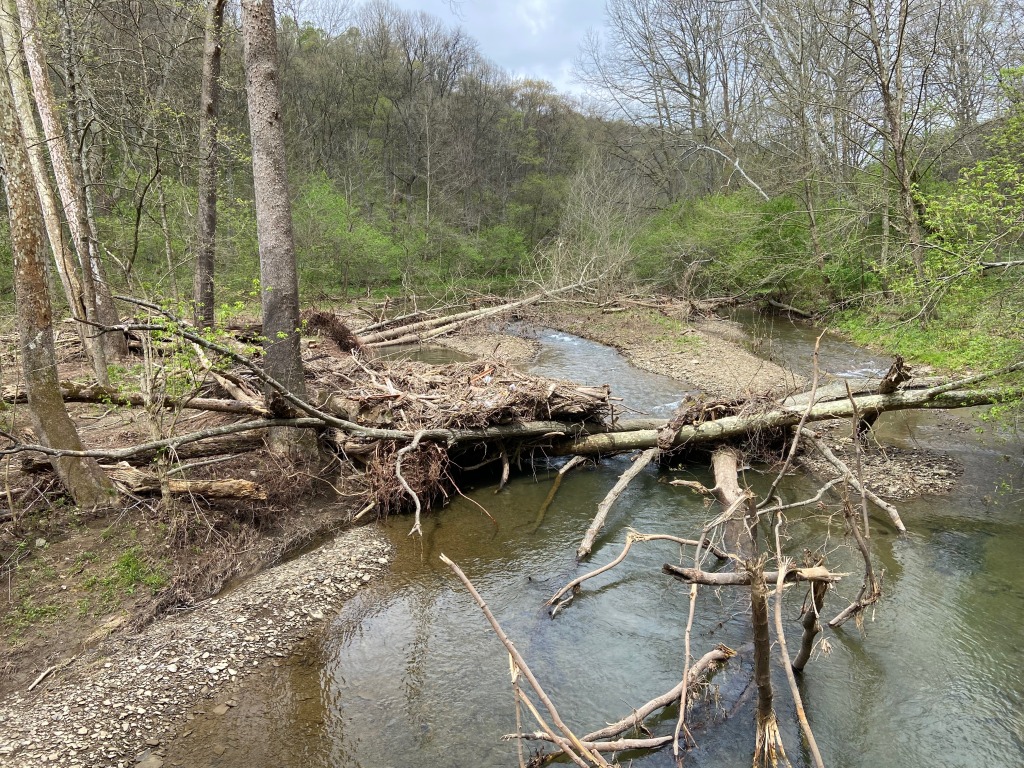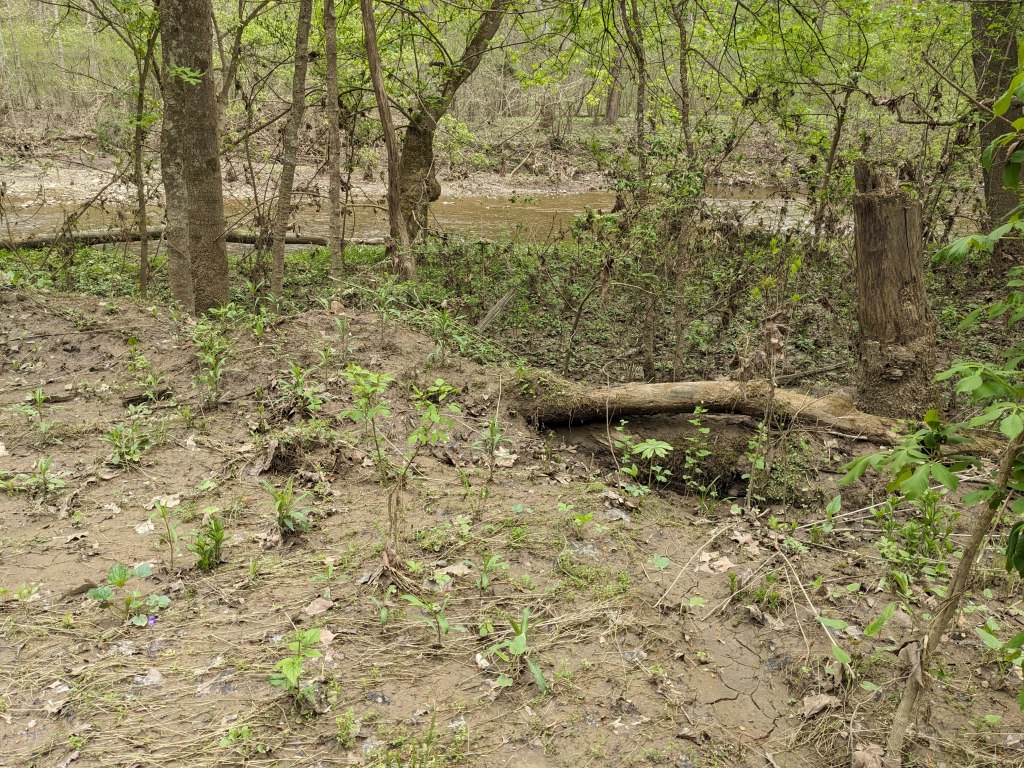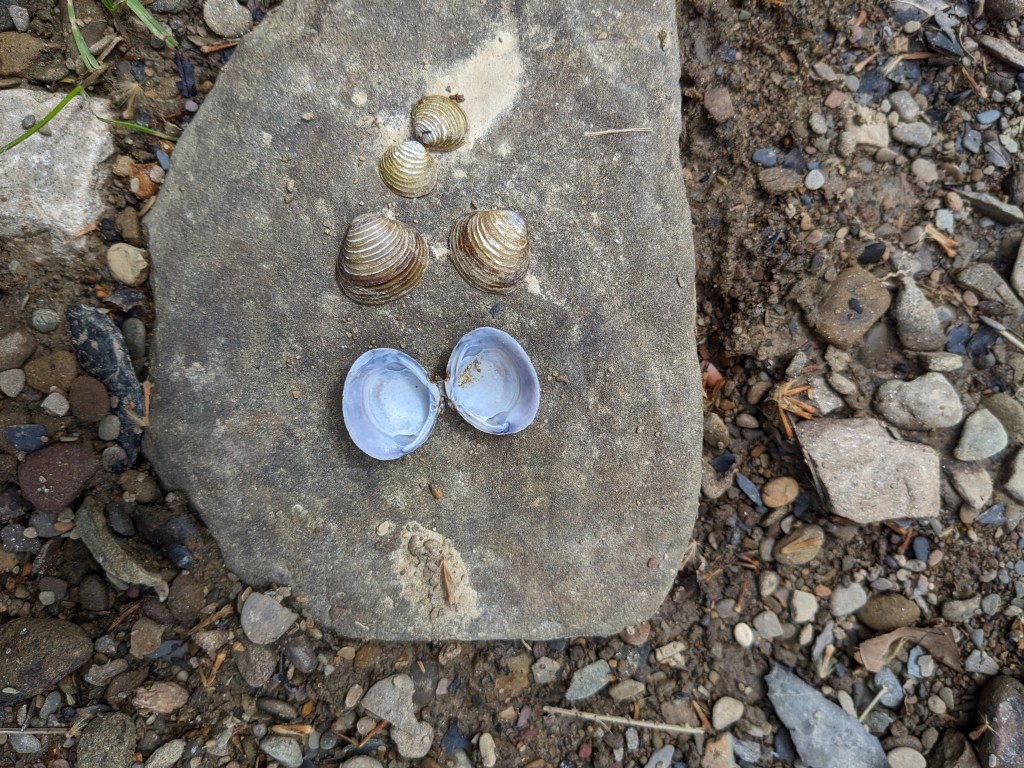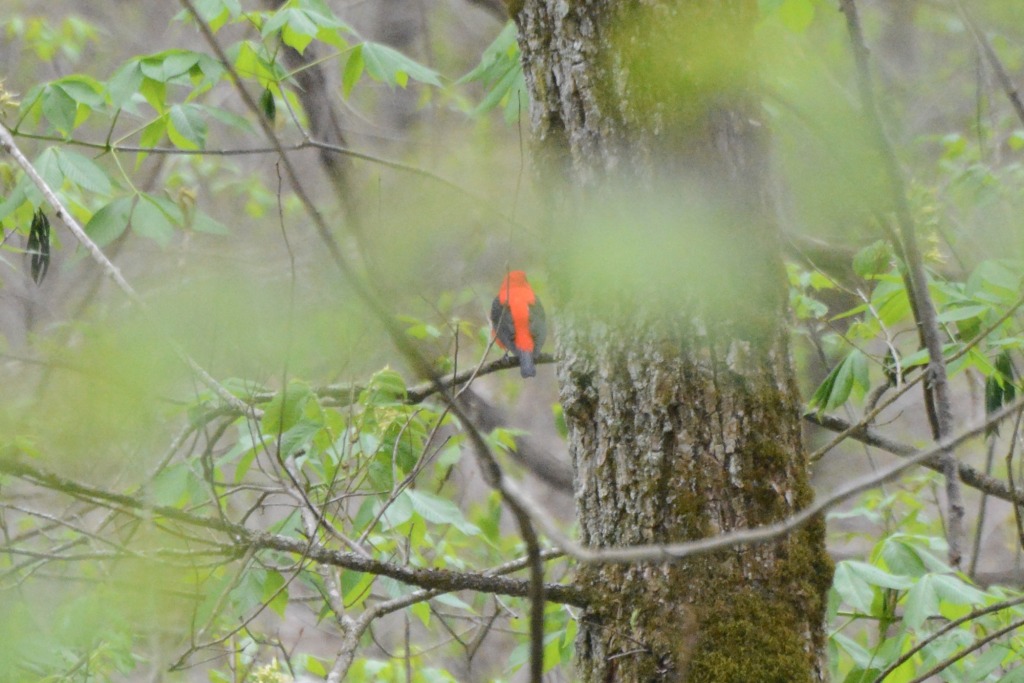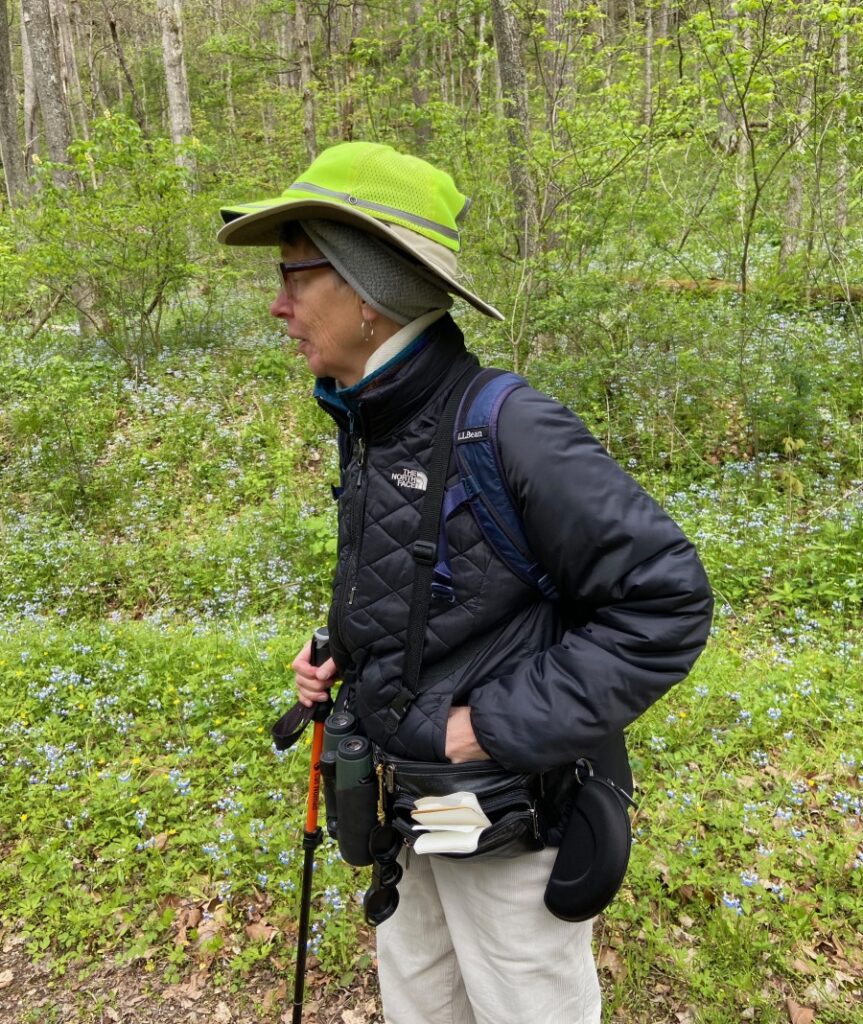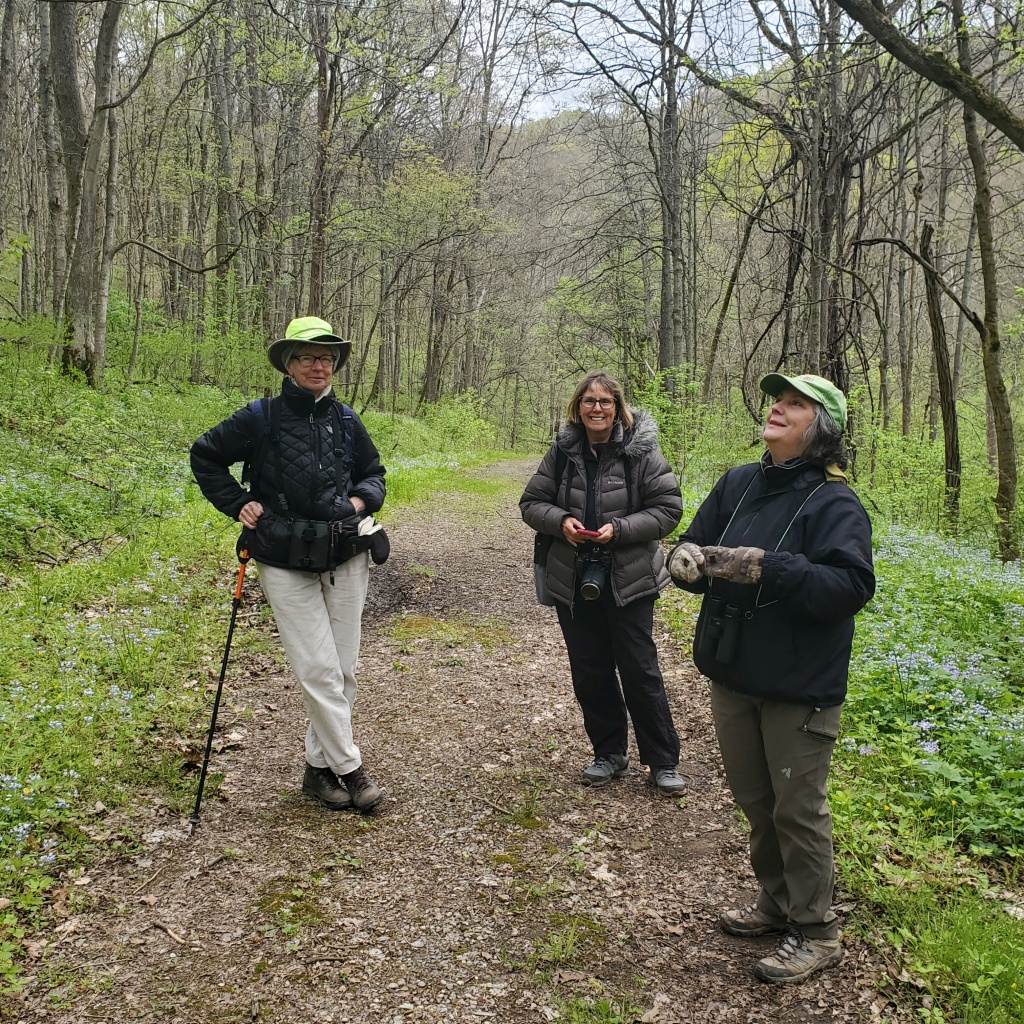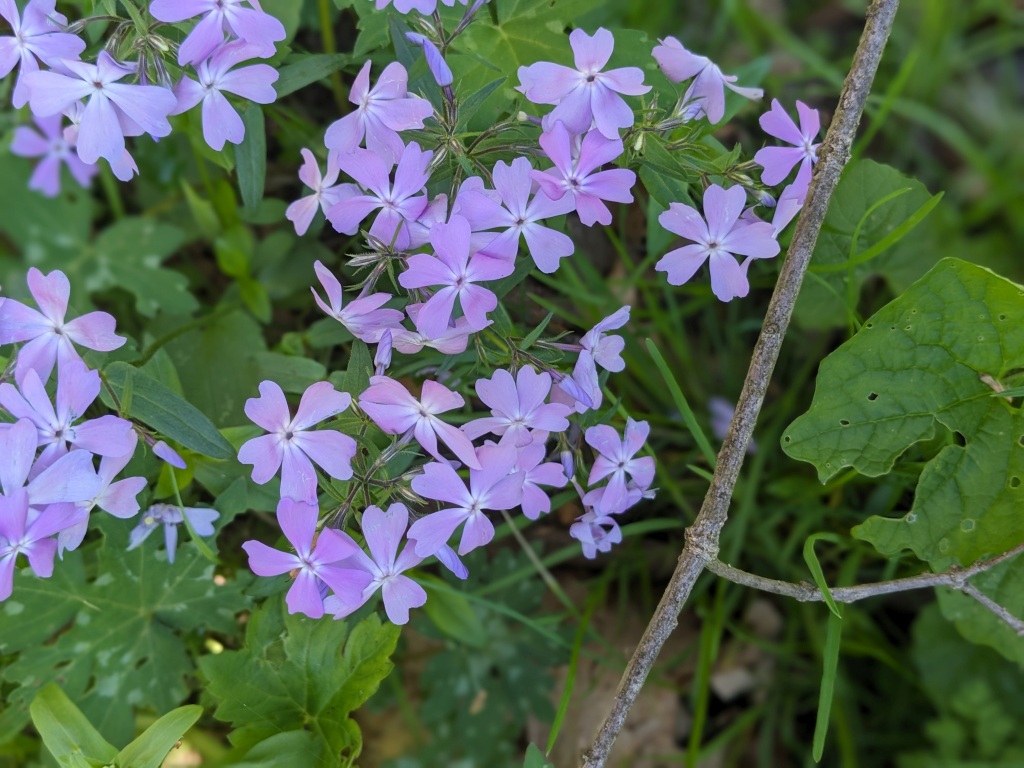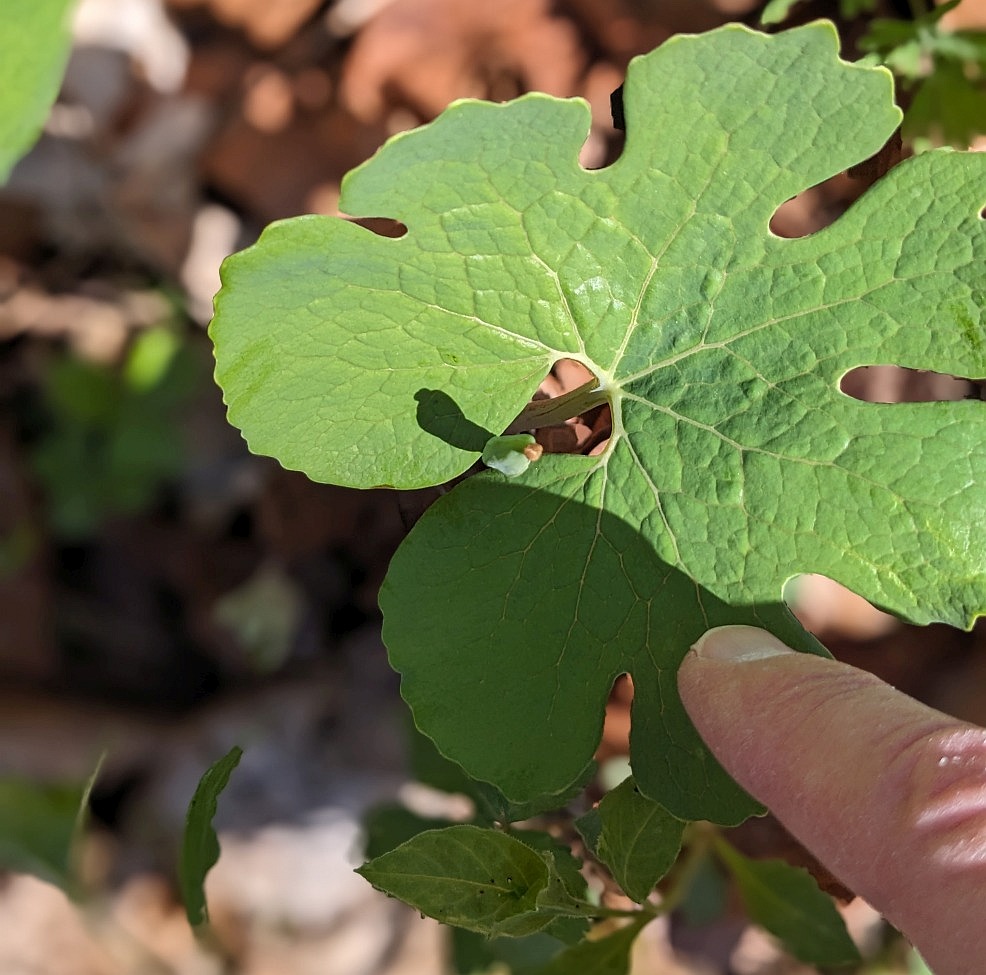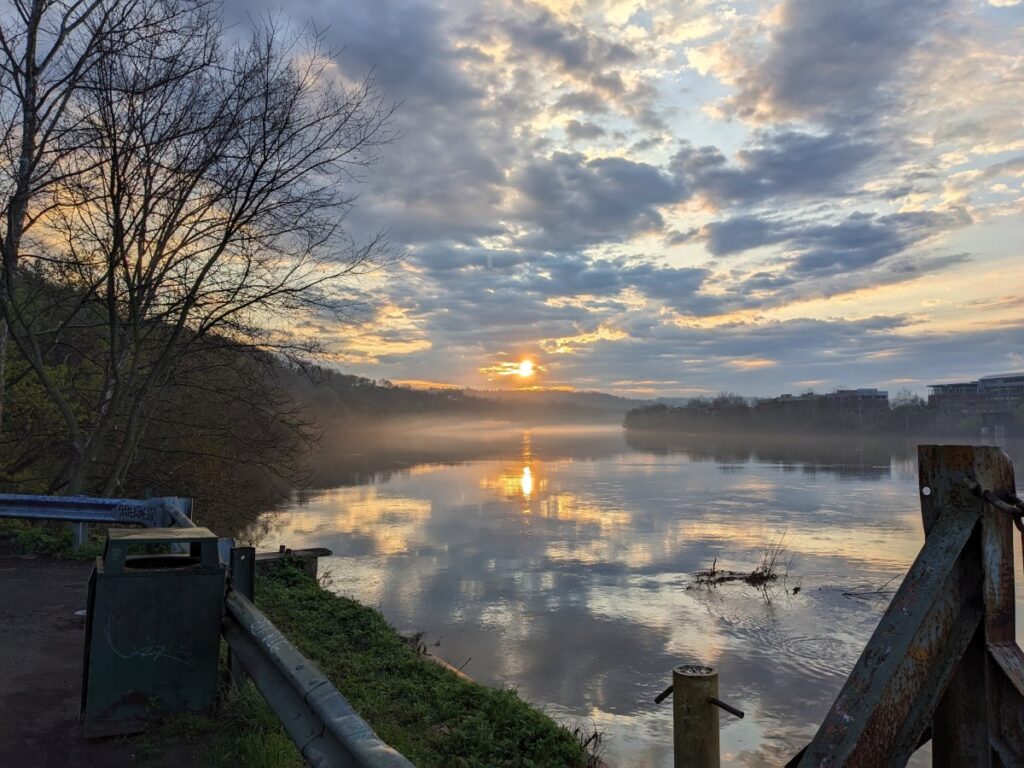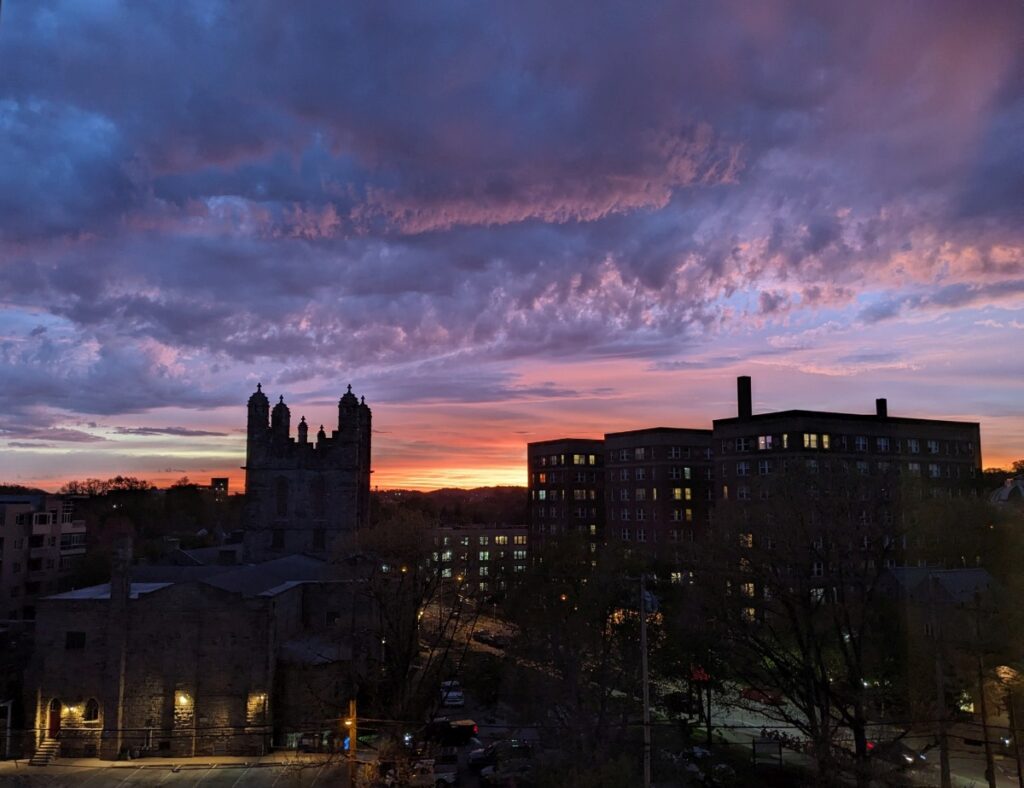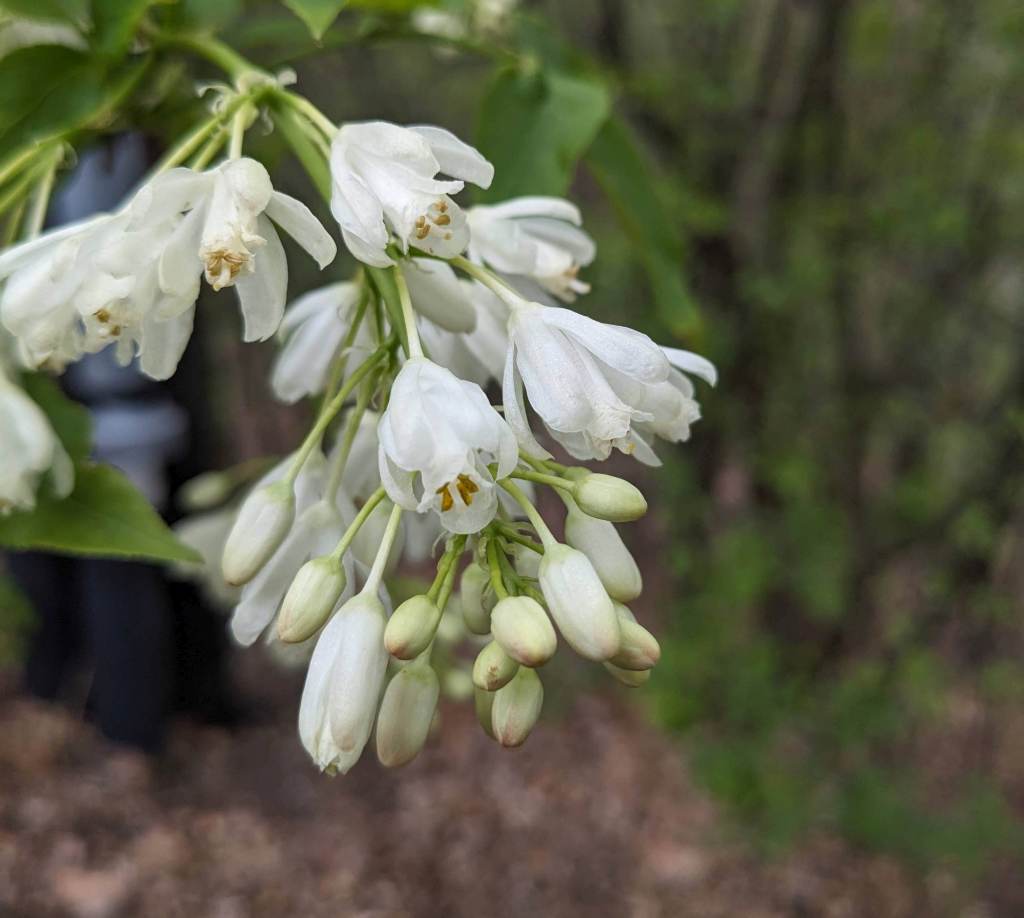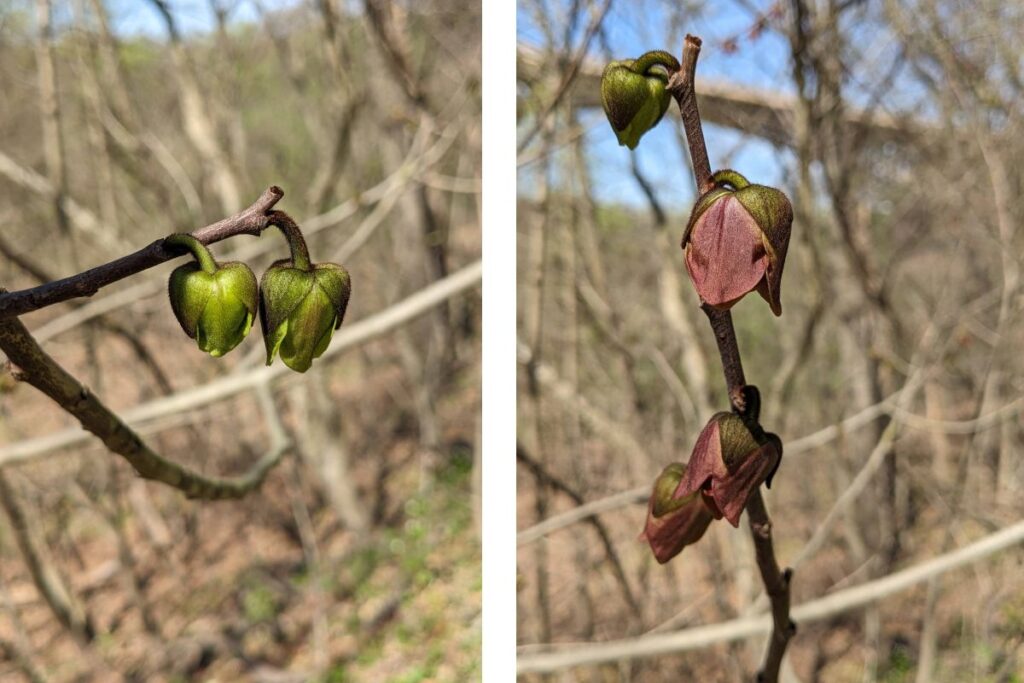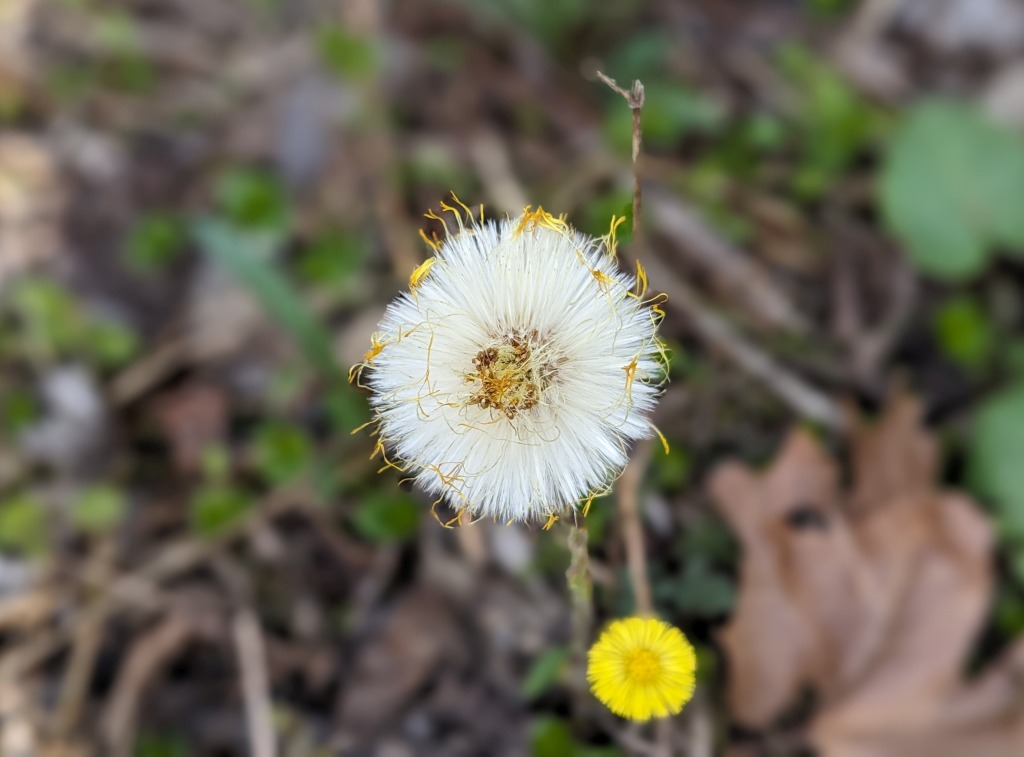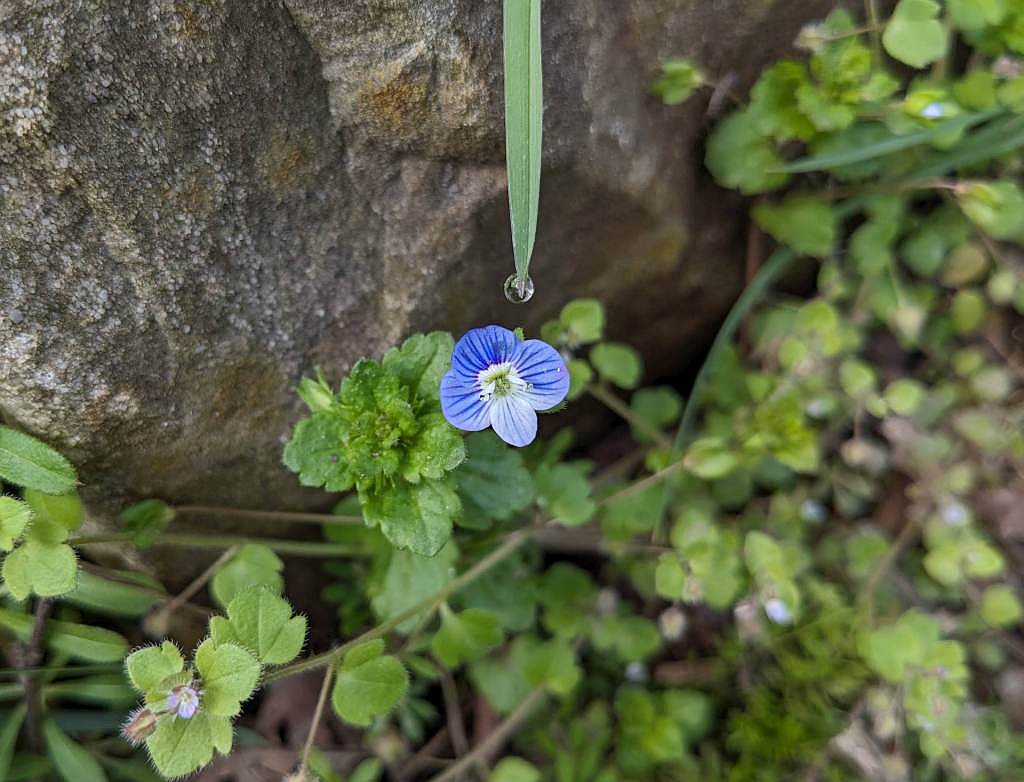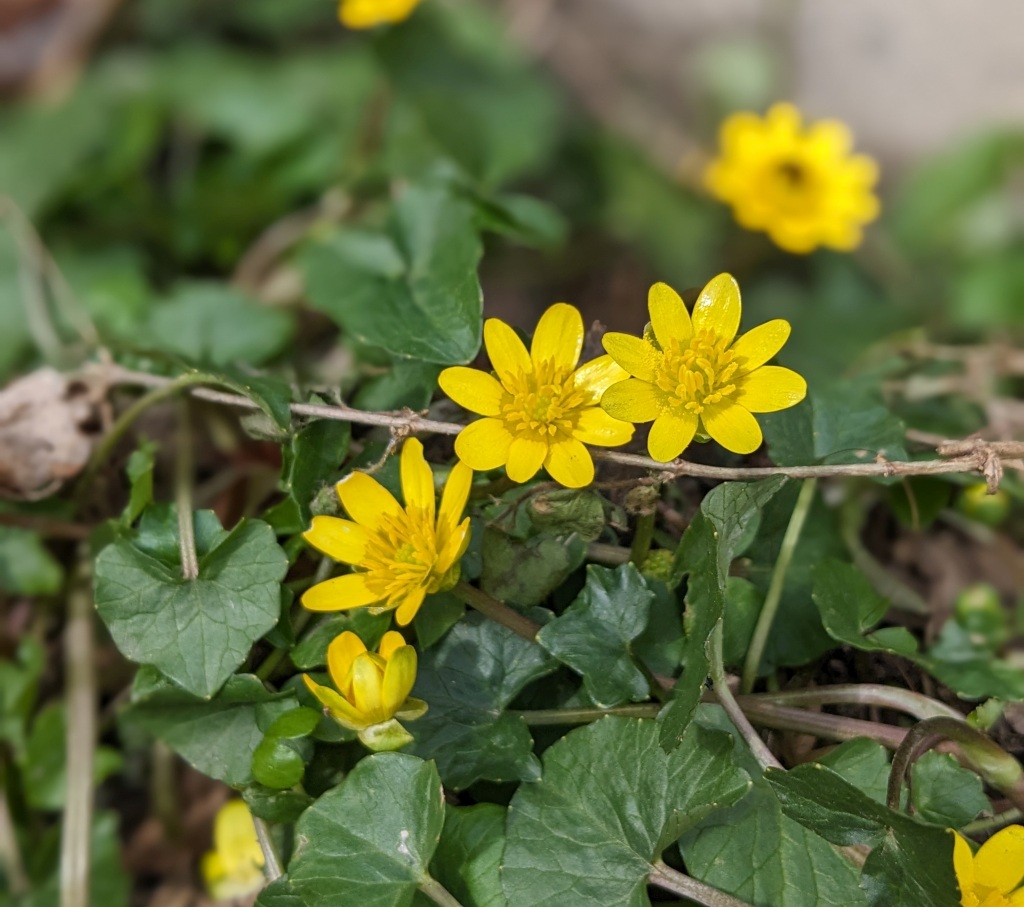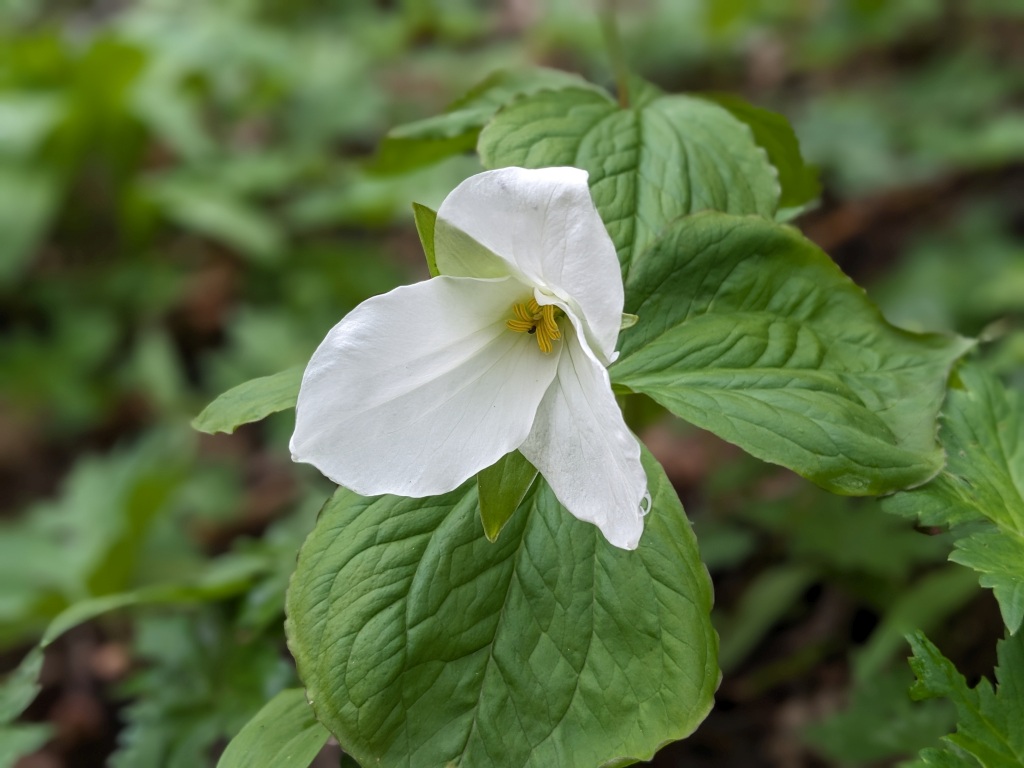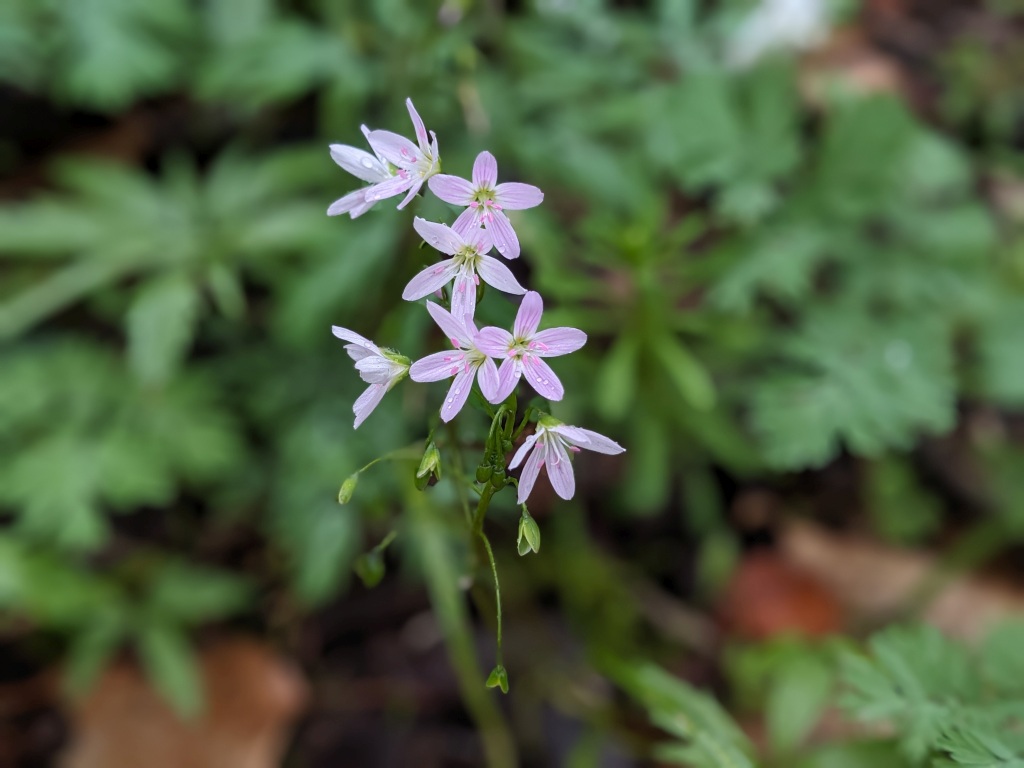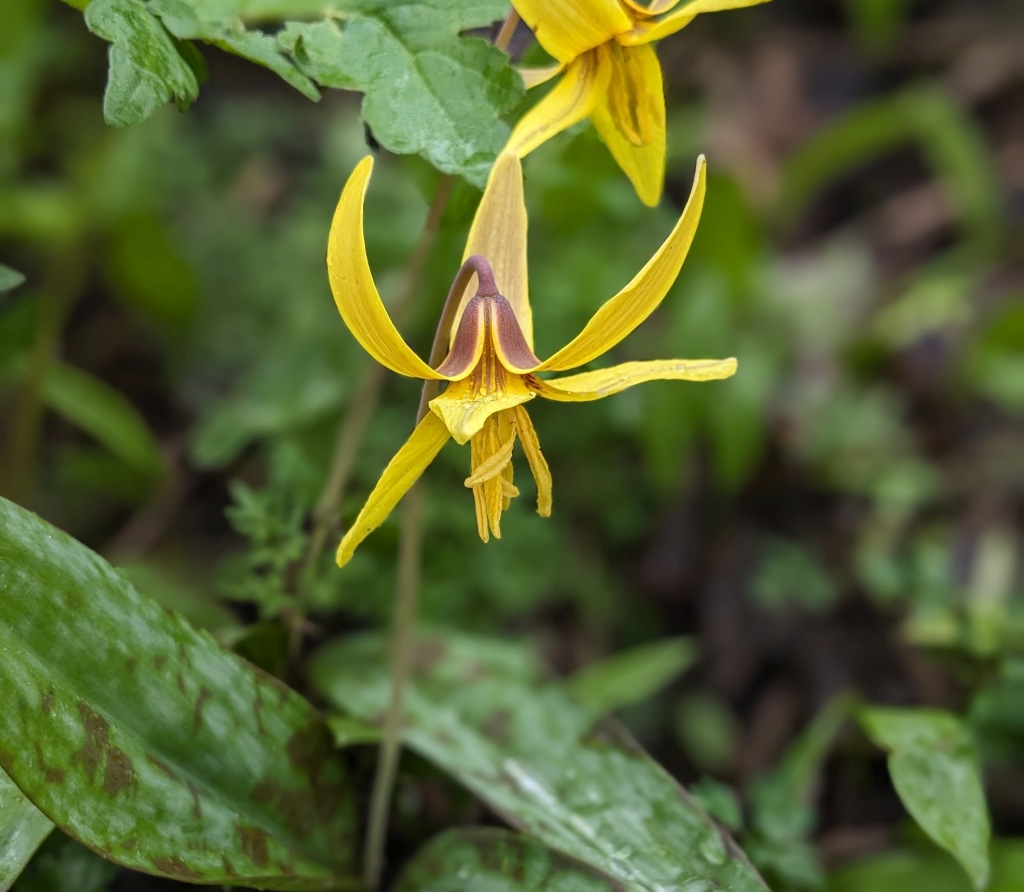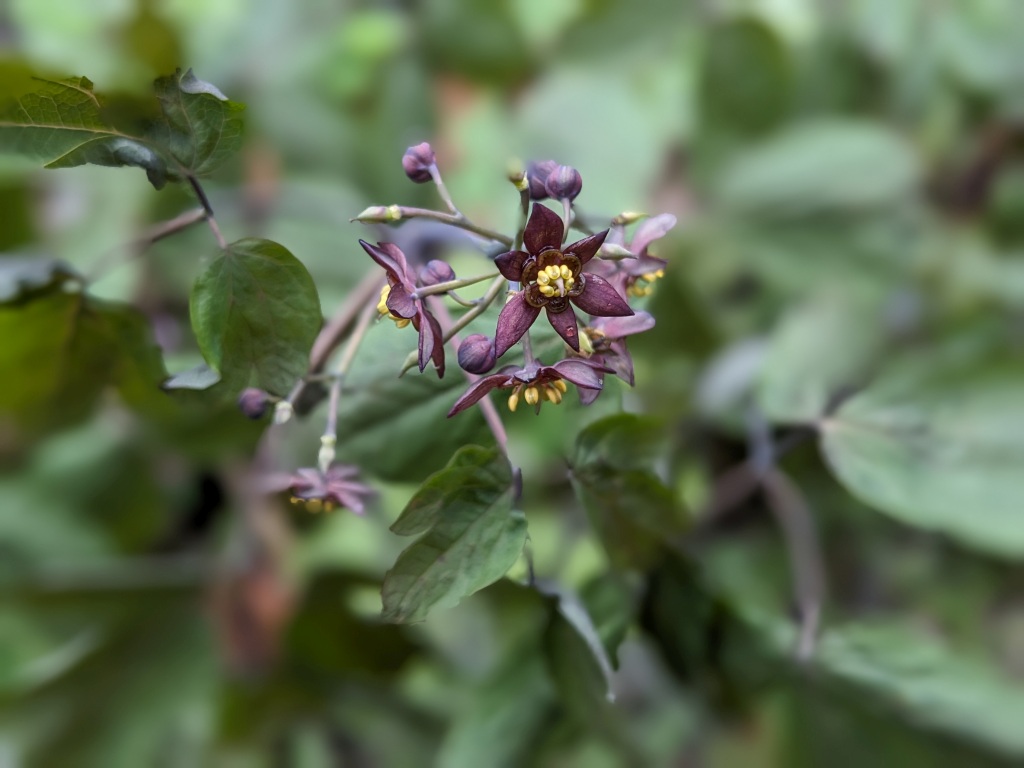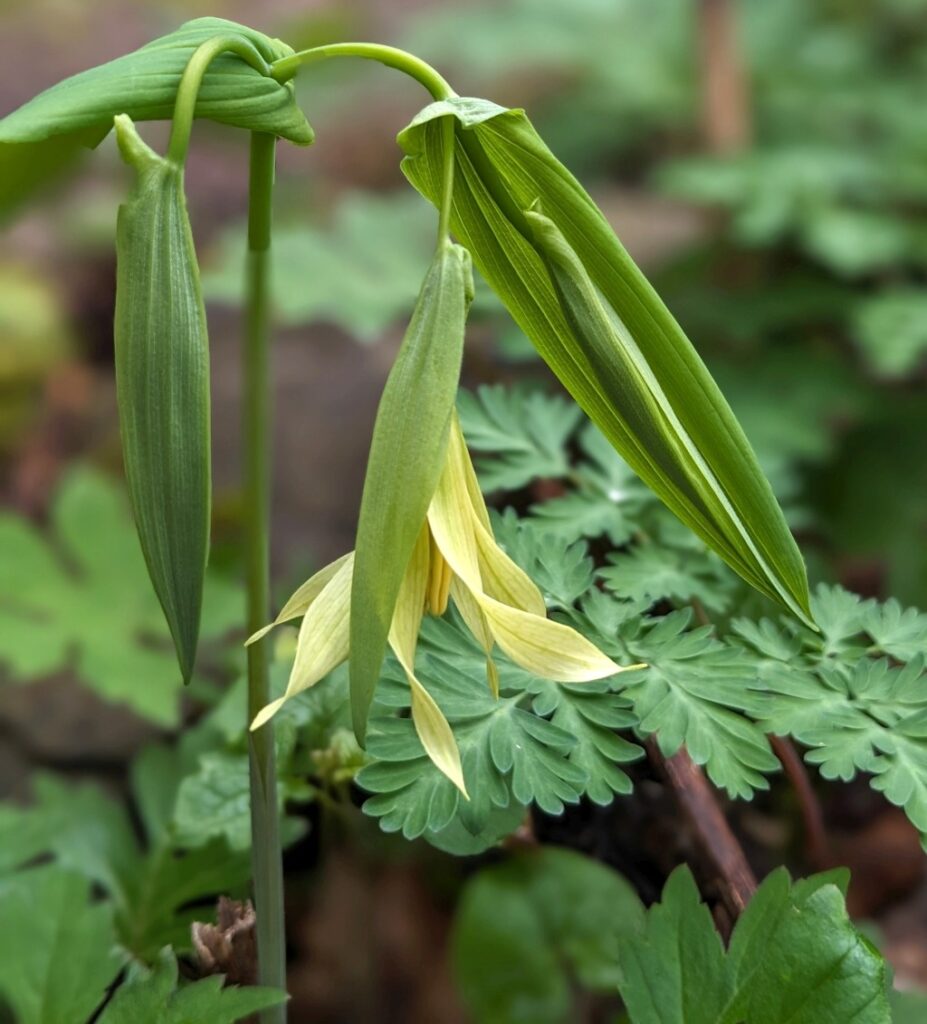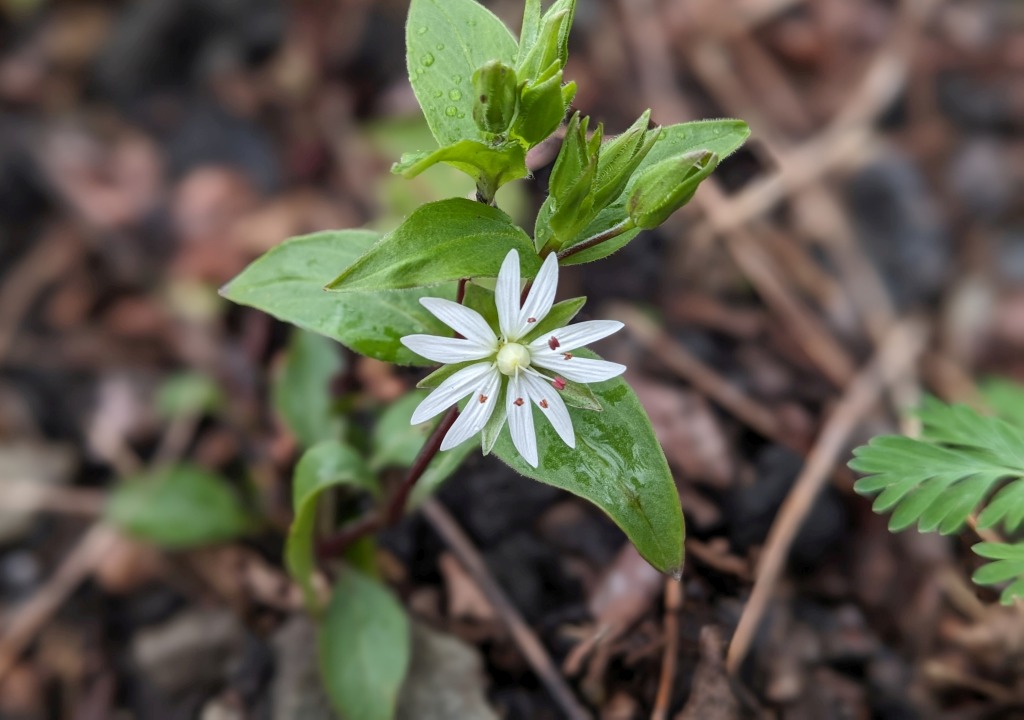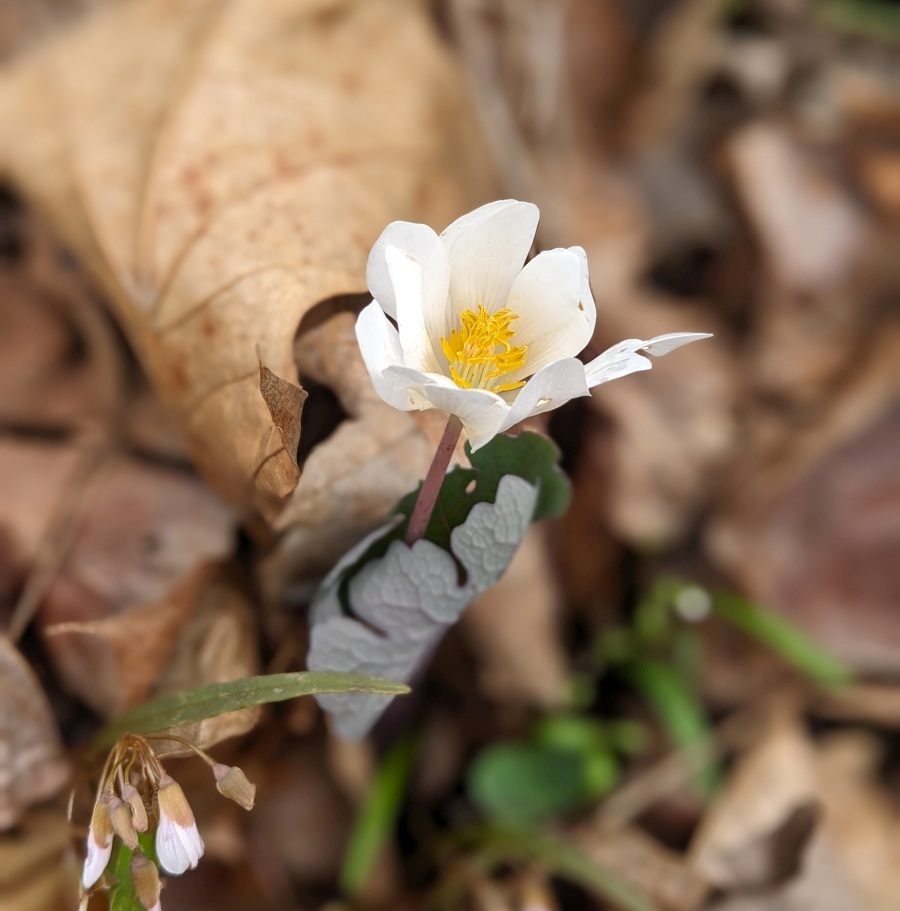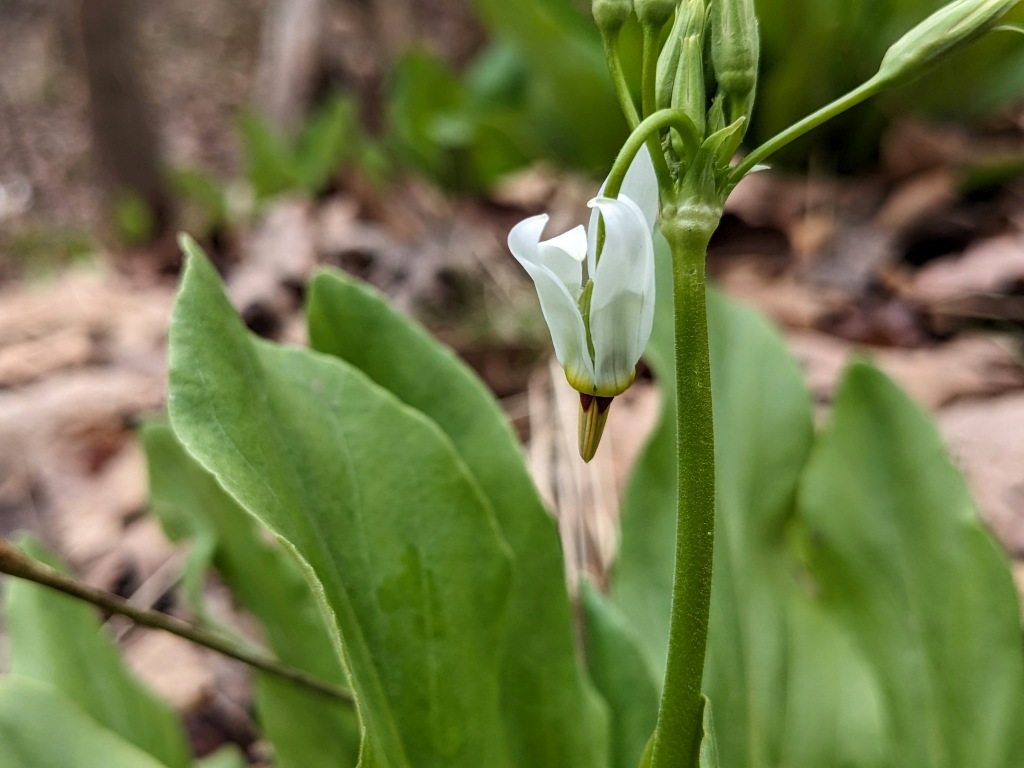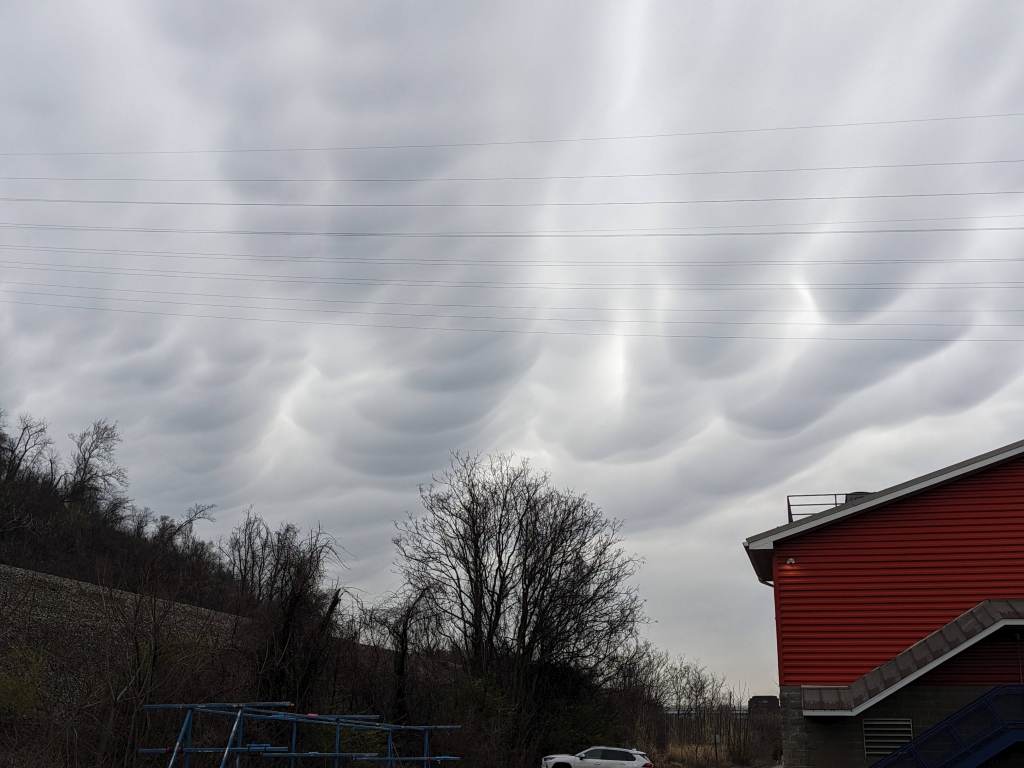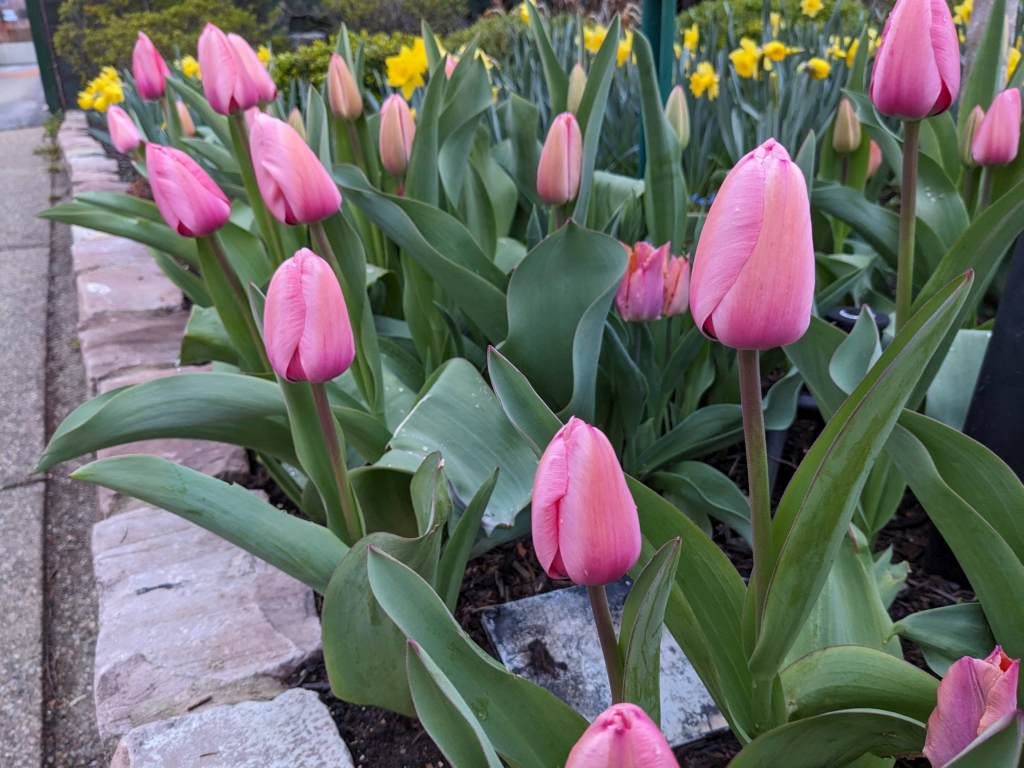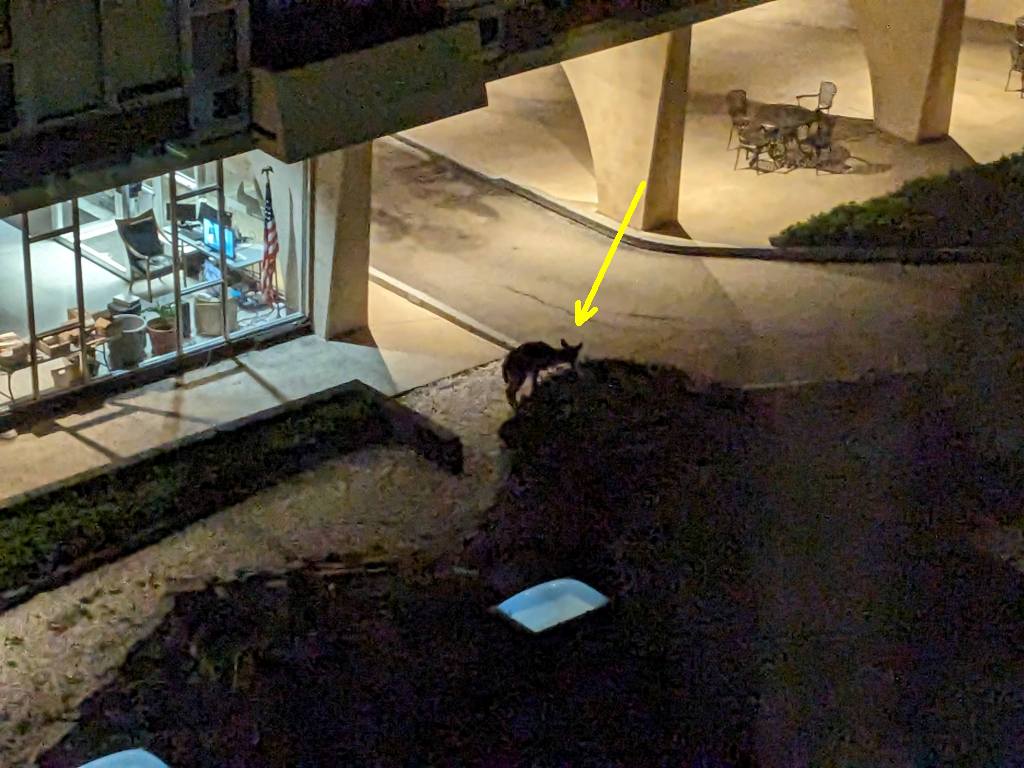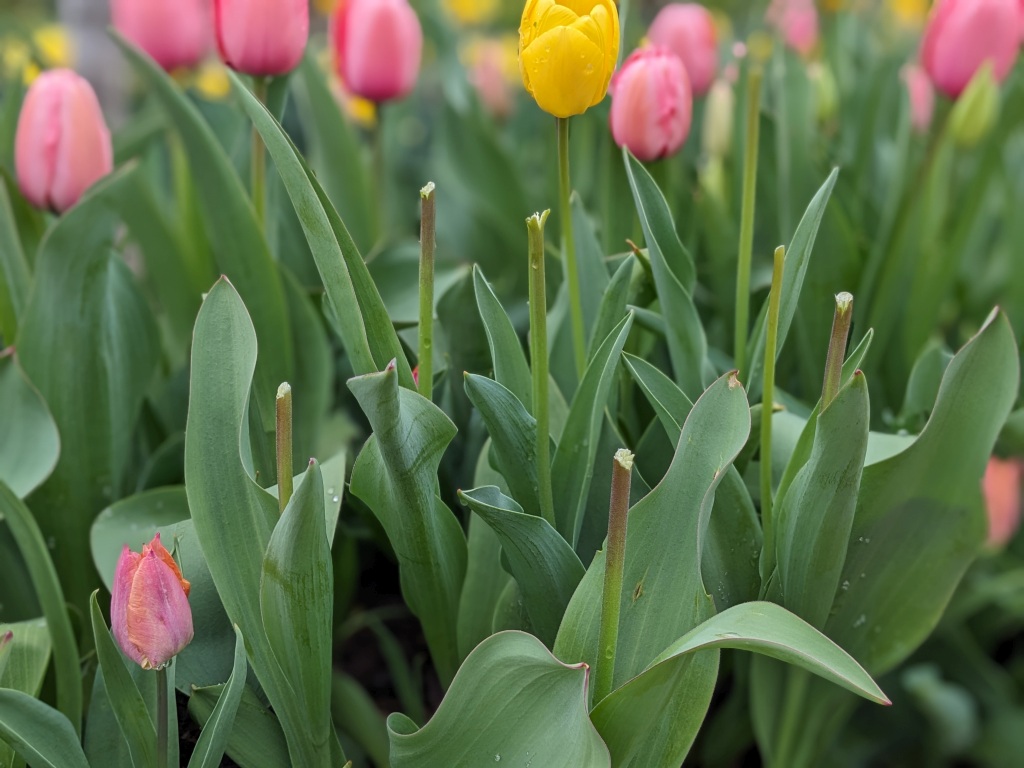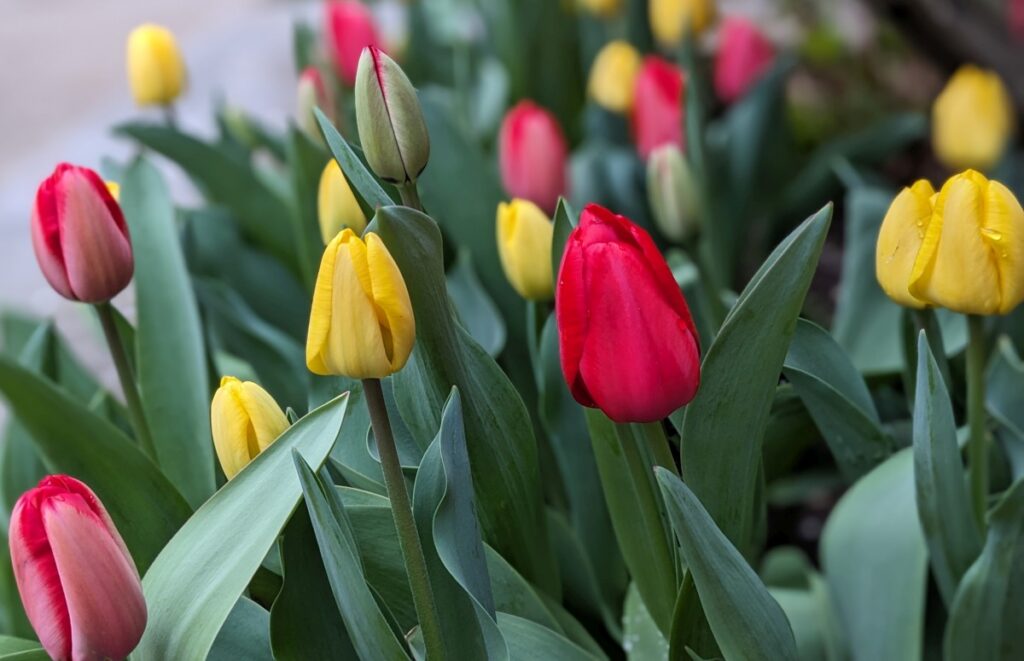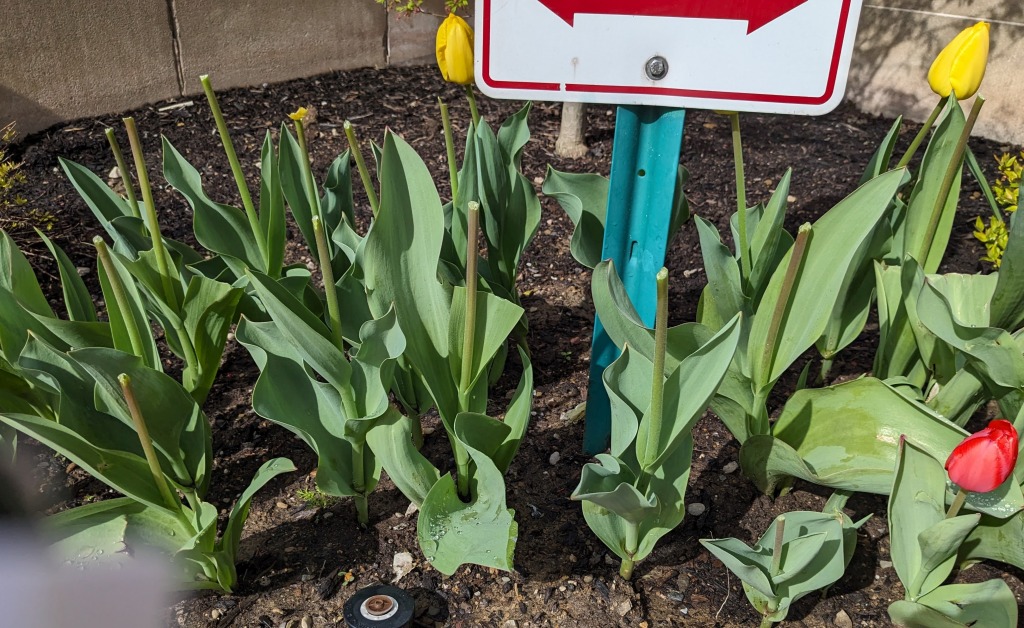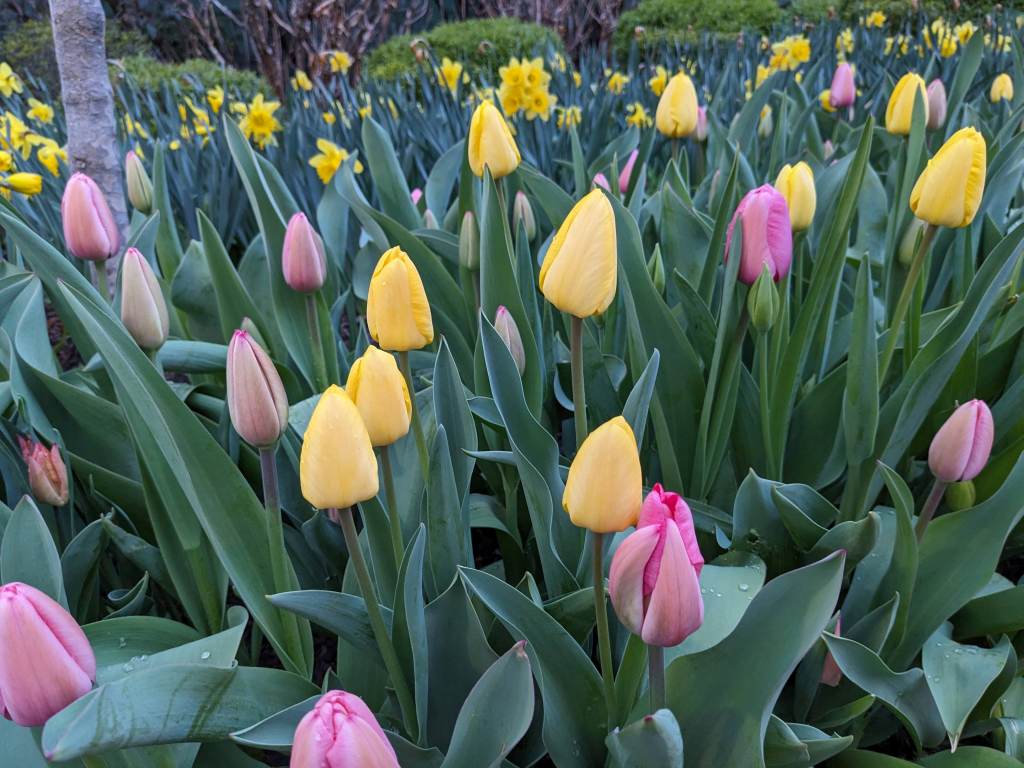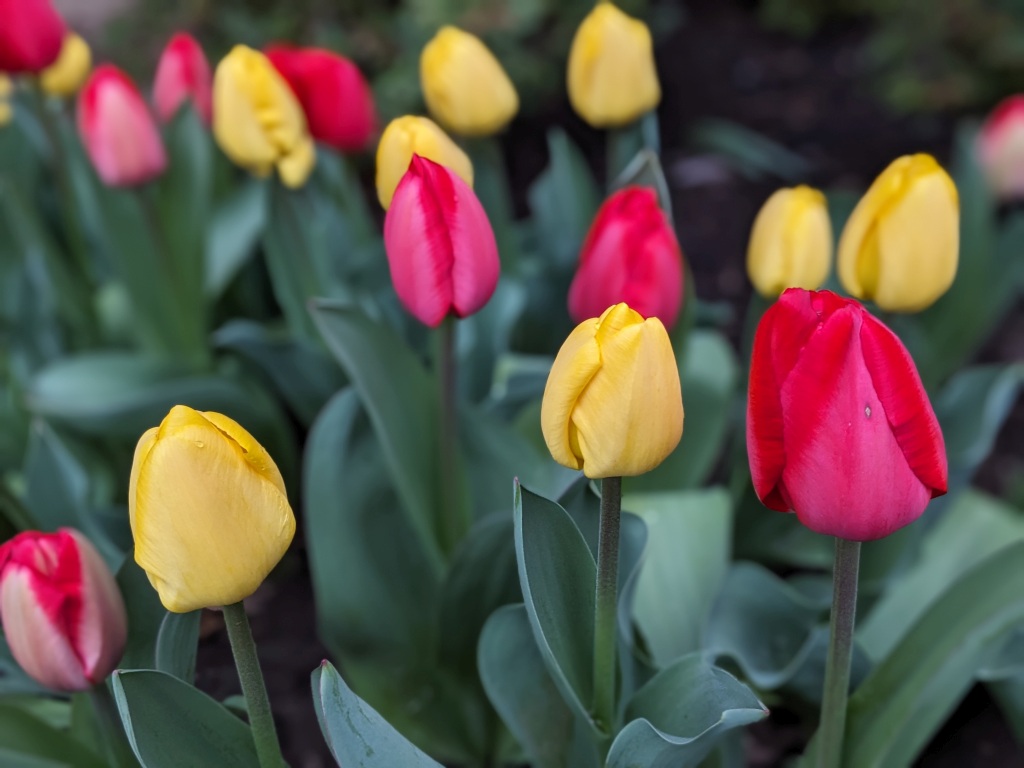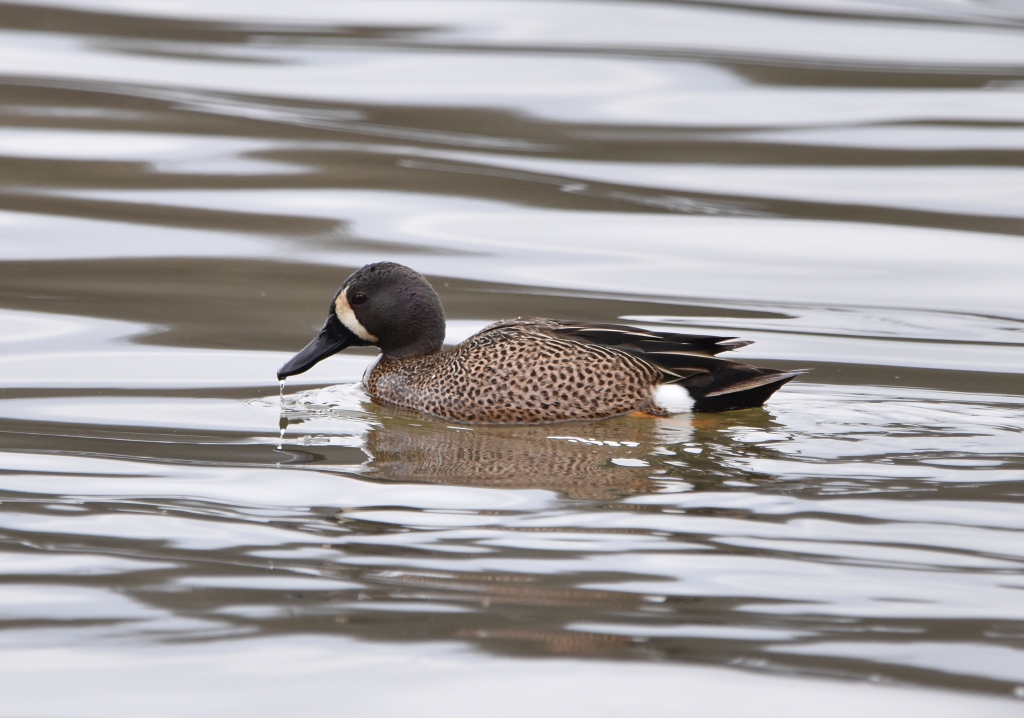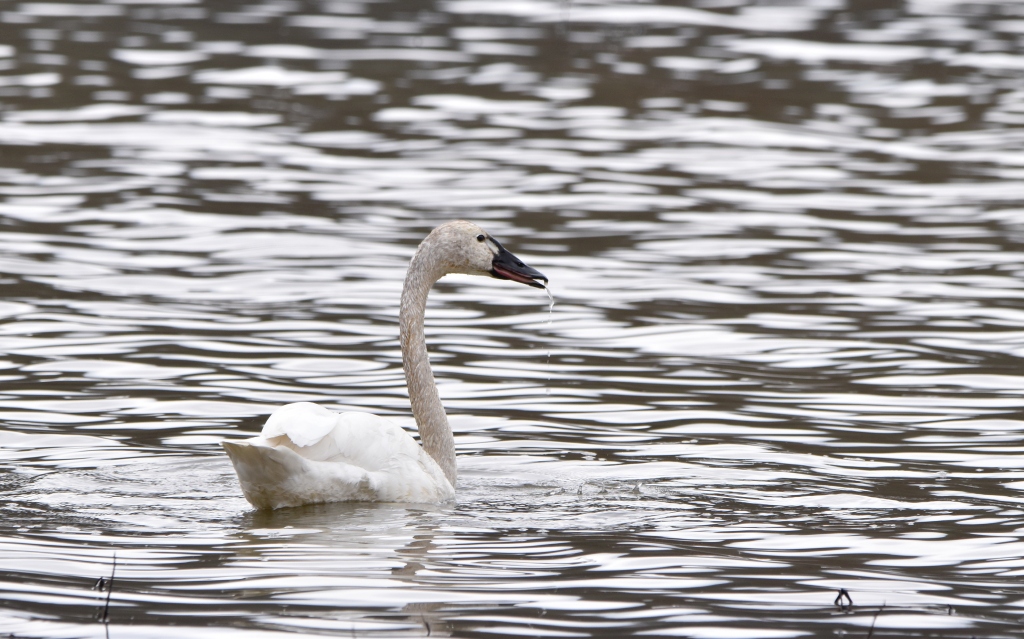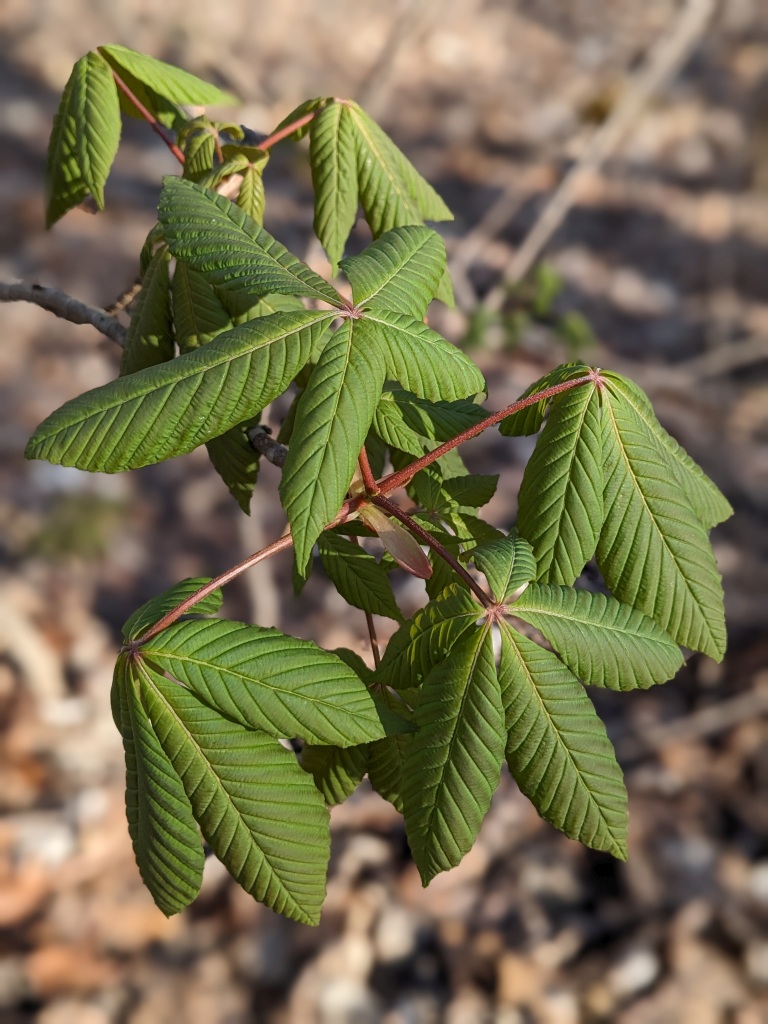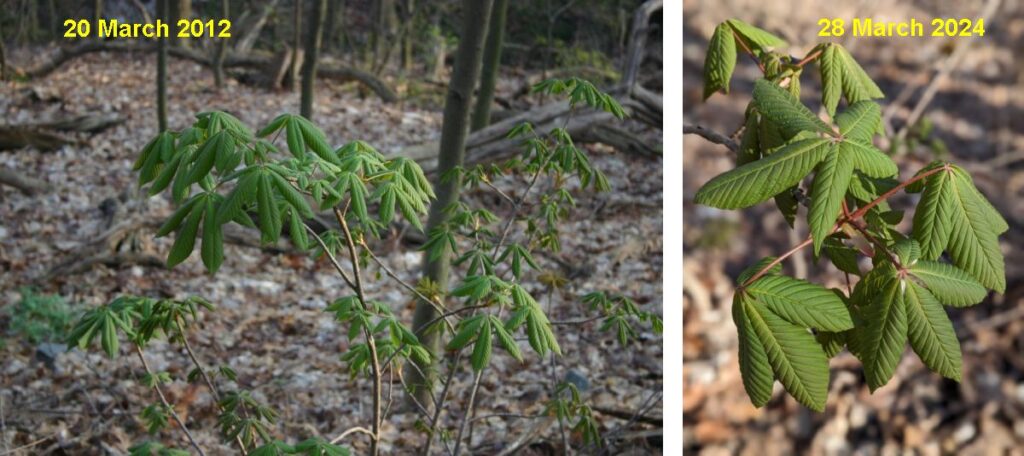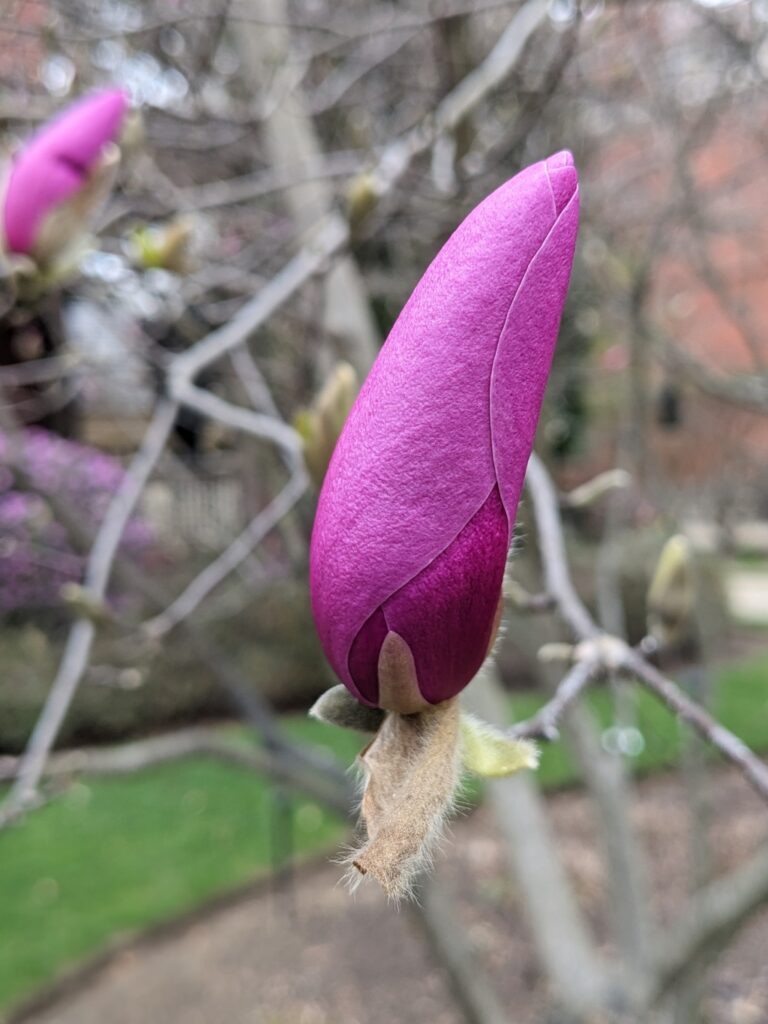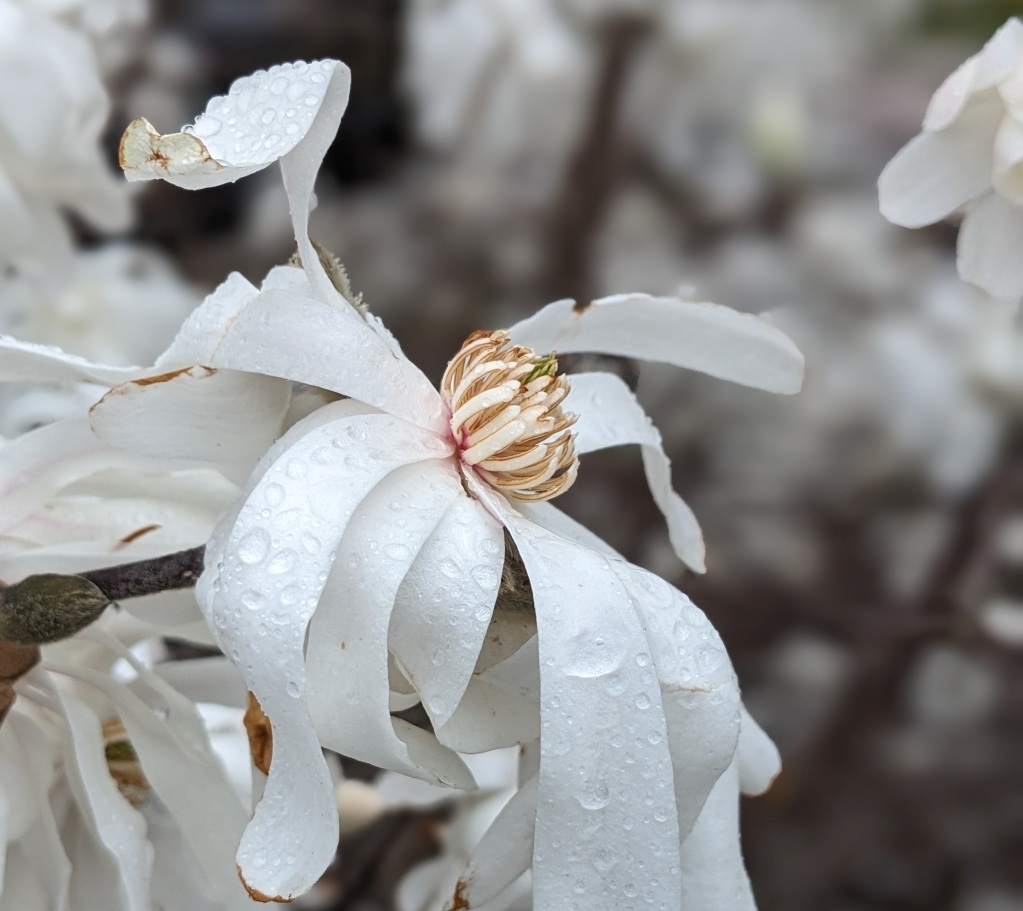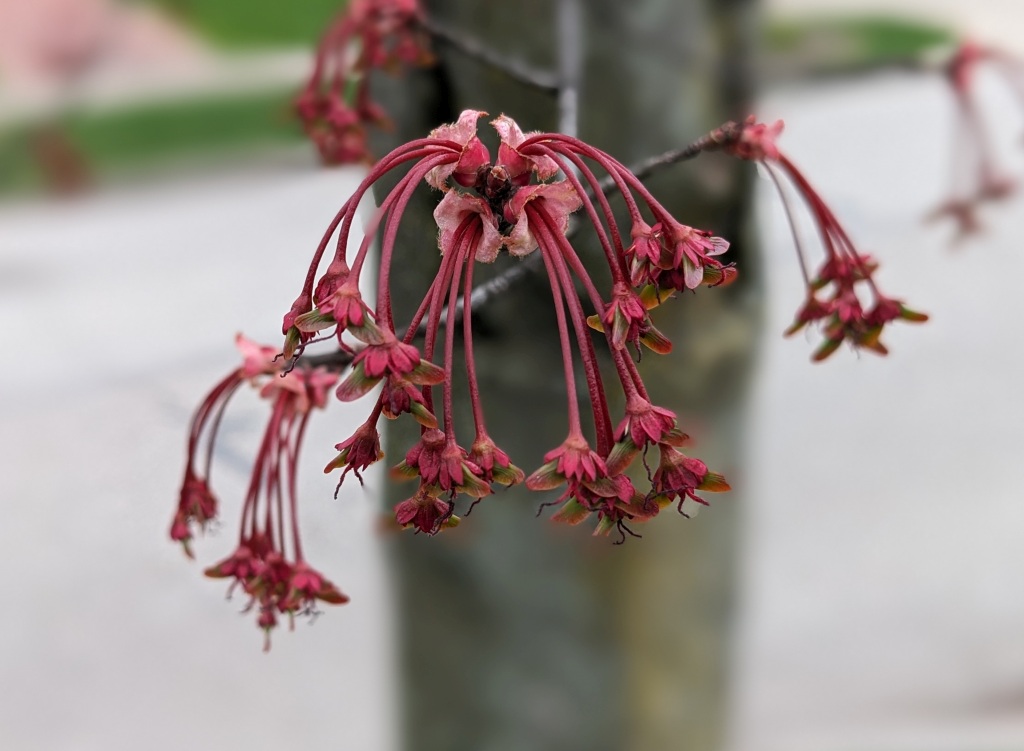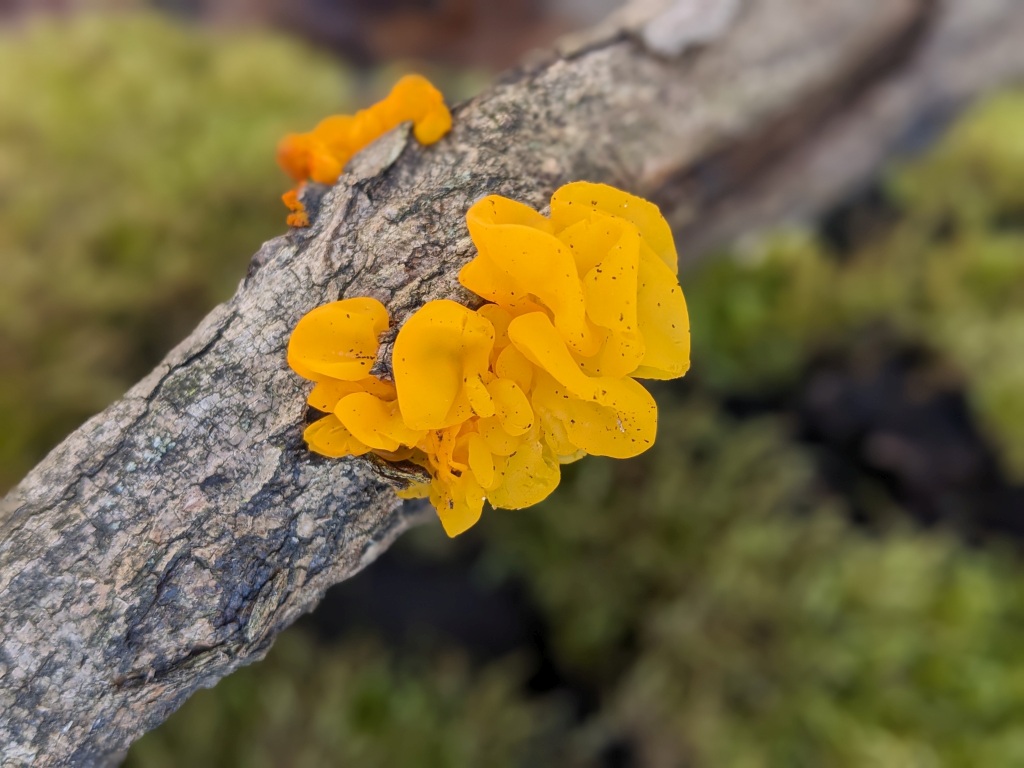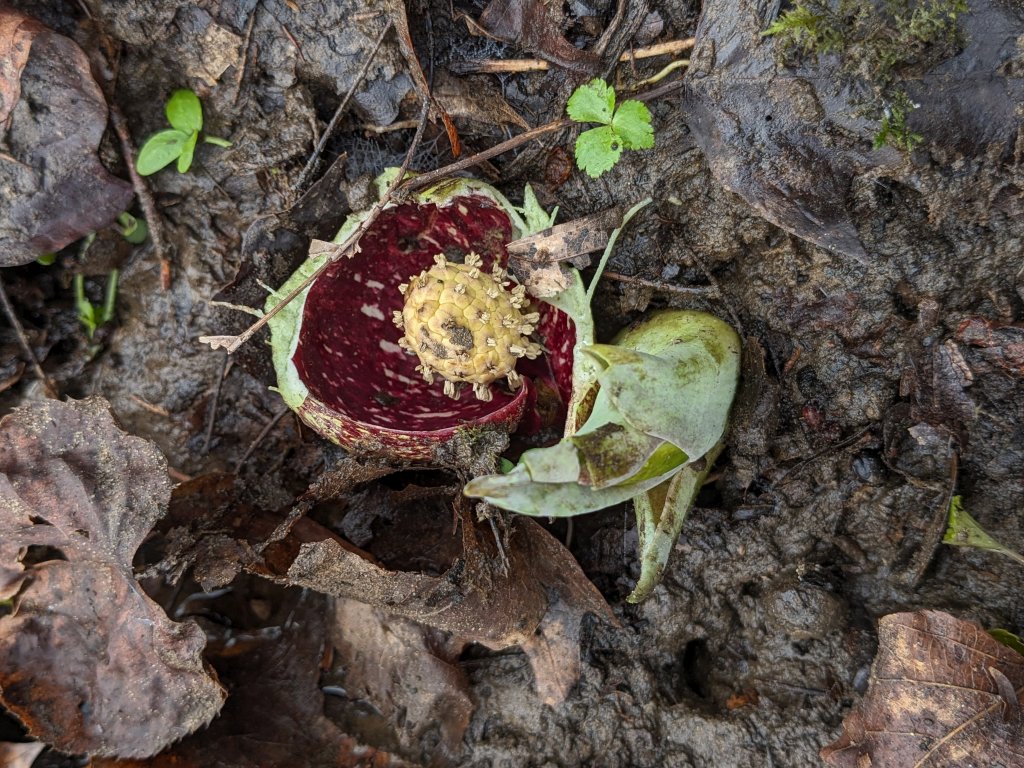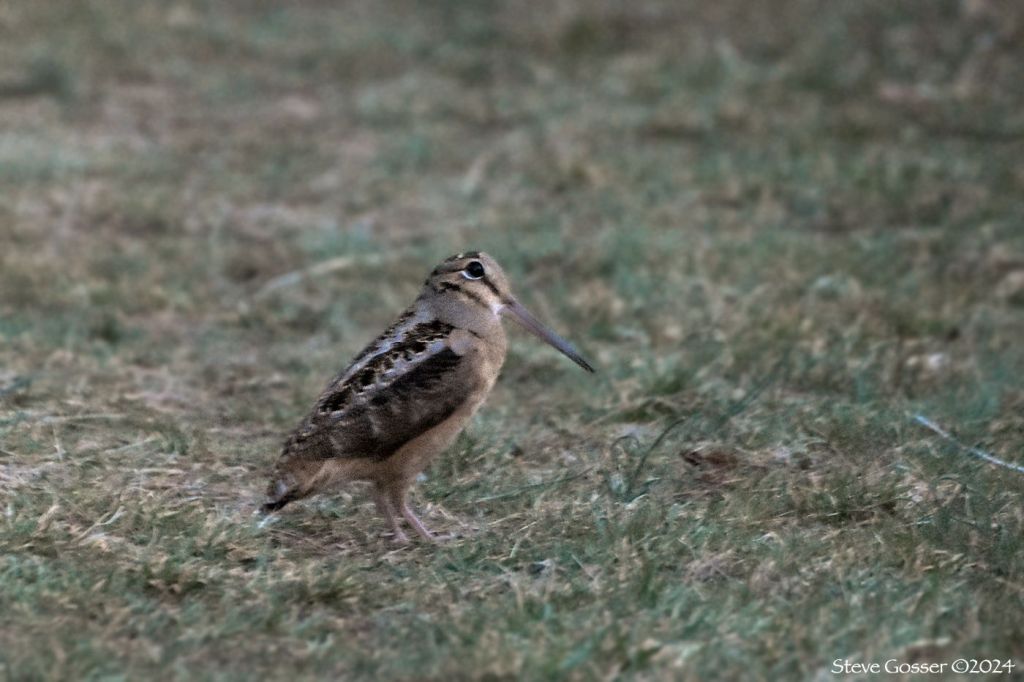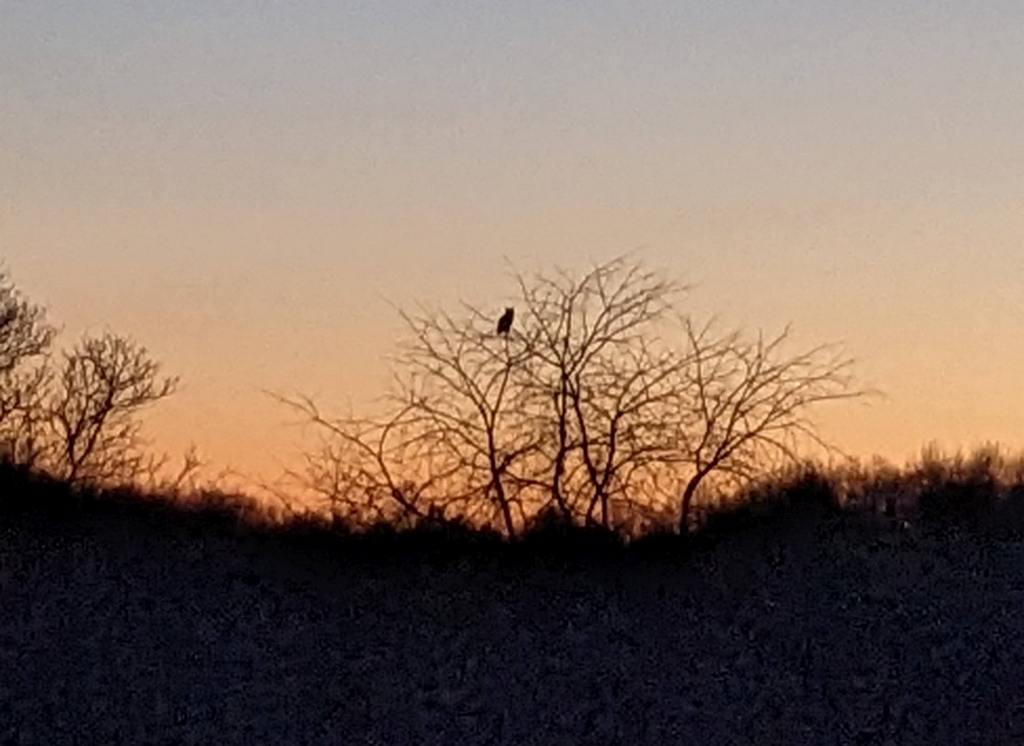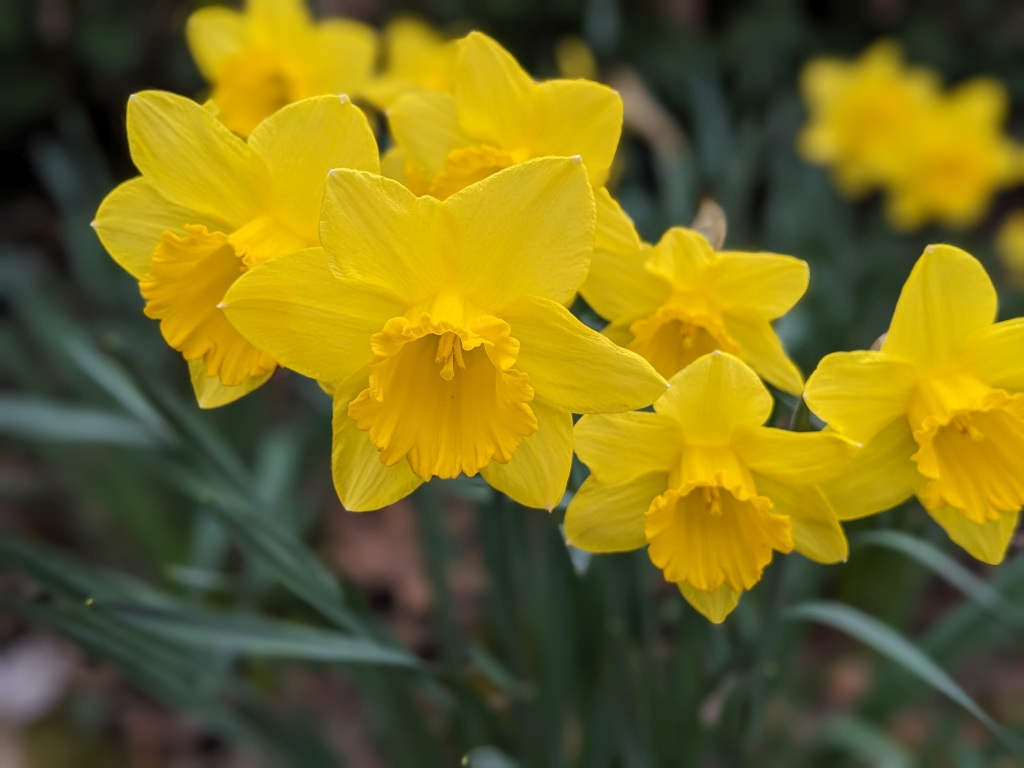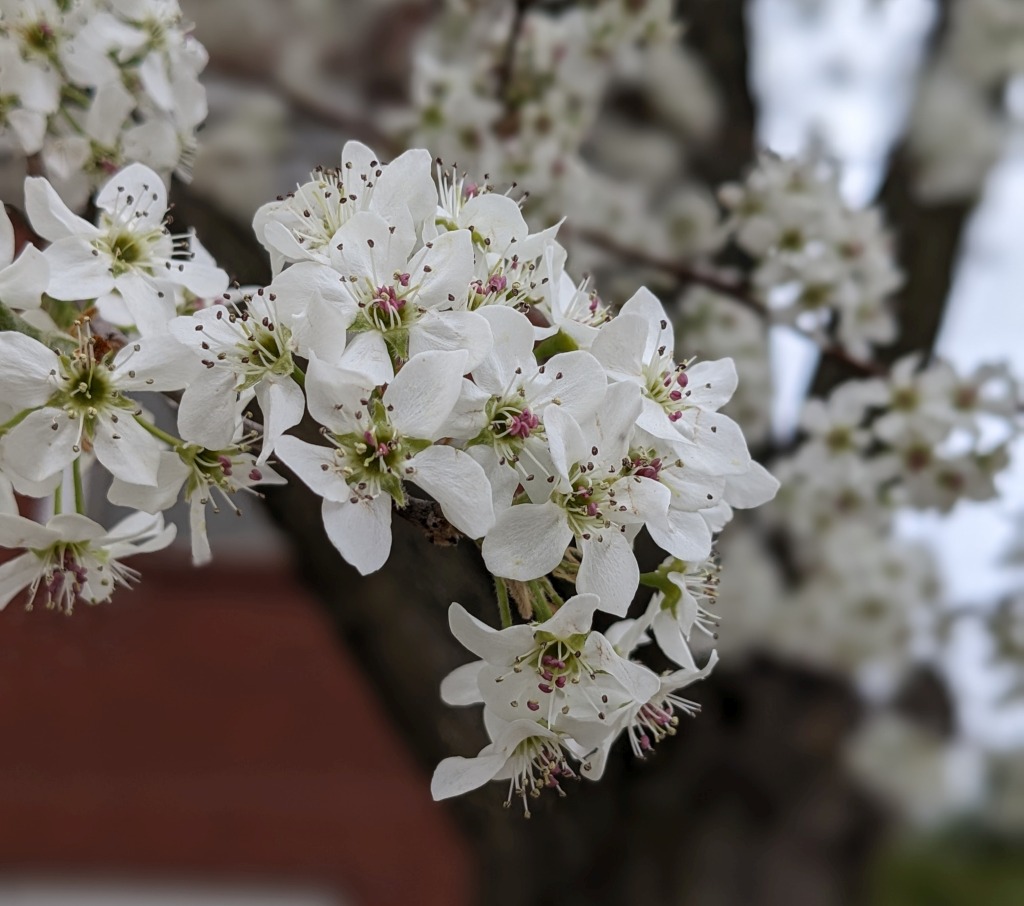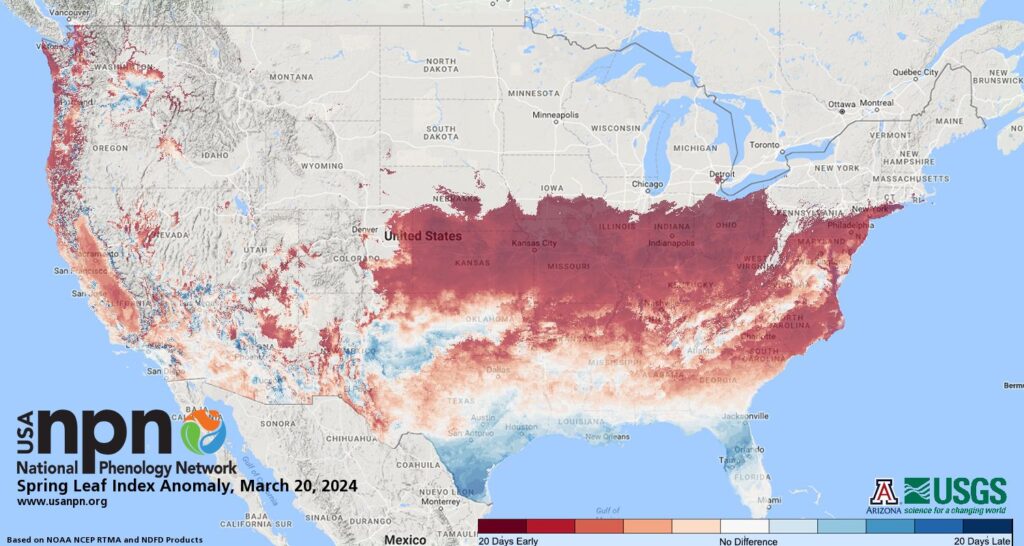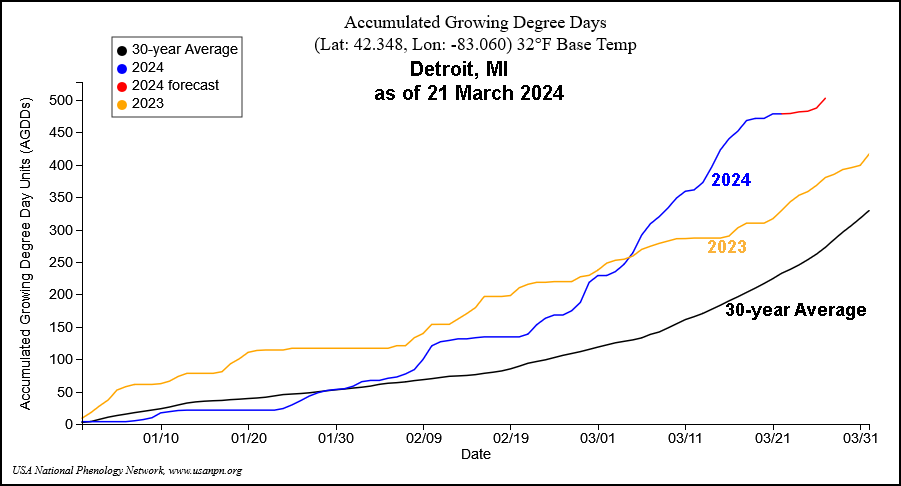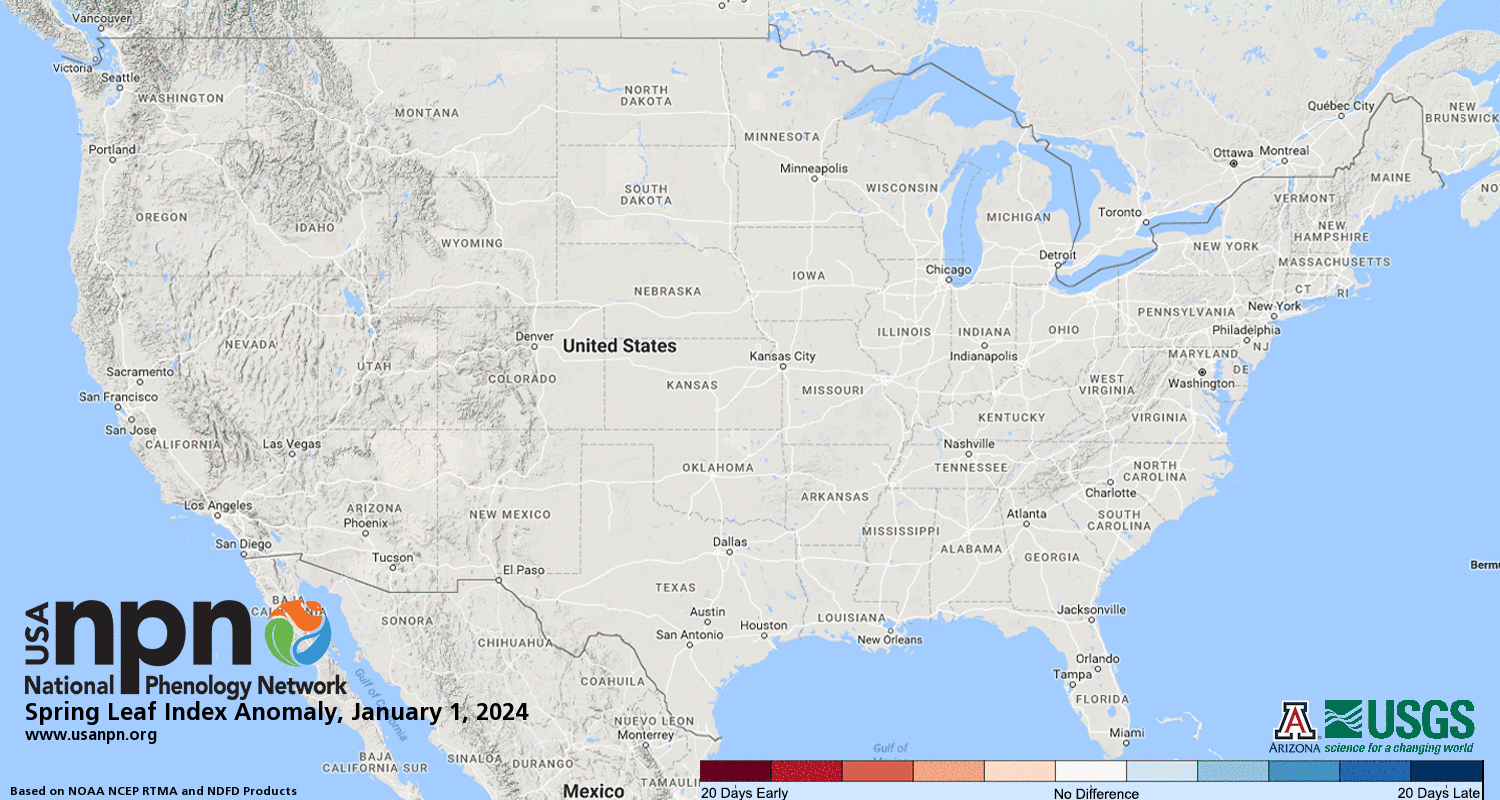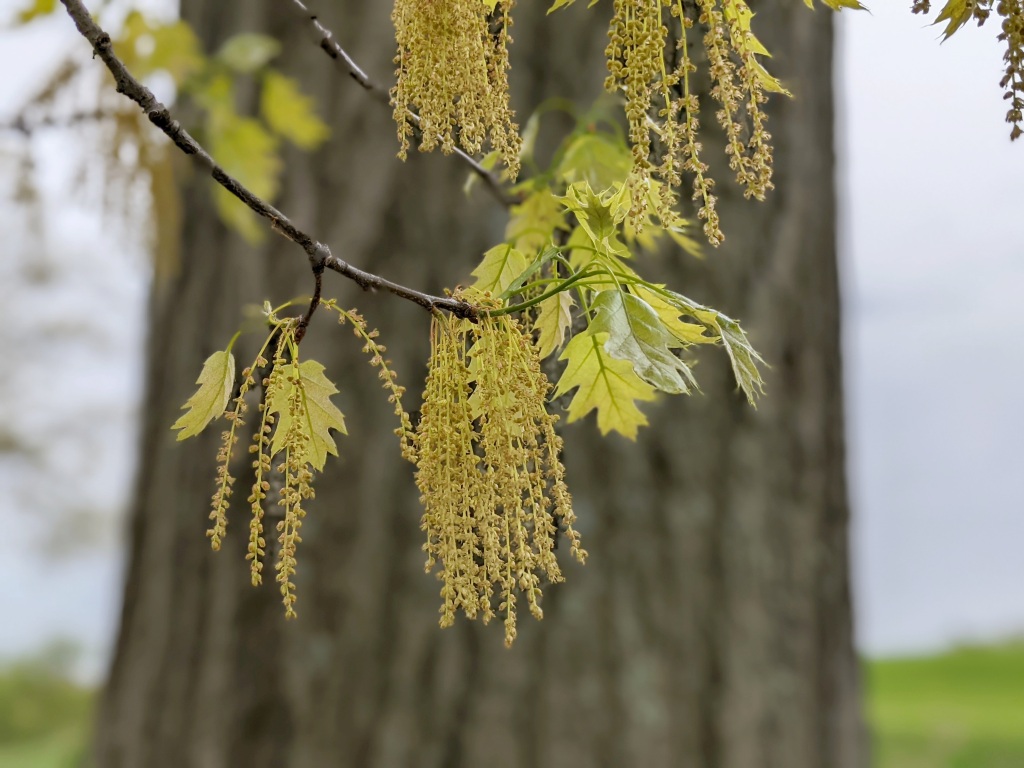
1 May 2024
Since our last spring checkup six weeks ago, Pittsburgh has galloped into summer. Last weekend we had July-in-April weather with official highs of 83°F and even higher in town.
Pitt peregrine Carla felt the heat at 10am on 29 April as she shaded her chicks and gular fluttered (panted) to cool herself off.

Pittsburgh is not alone. In a wide swath of the U.S. from Iowa to New York spring was 20+ days early this year. In Pittsburgh nearly half of April was more than 10°F above normal while we had only one cold day at 12°F below normal.

So what temperature should we expect if we’re only 20 days ahead of schedule? April 29th ought to have been like a normal 19 May but it was way beyond that.
The heat prompted the trees to leaf out early and flowers to bloom ahead of schedule. Maples and buckeyes are in full leaf now and our oaks are at flower+leaf stage as shown at top. The leaves are hosting food for birds in the form of tiny caterpillars, so …
Migratory birds are taking advantage of the south winds and early leaf out. Since 27 April we’ve seen our first scarlet tanagers, rose-breasted grosbeaks, Baltimore orioles, indigo buntings and warblers.
Charity Kheshgi has been documenting our good luck with warblers at Frick Park. Notice the size of the leaves in her photos!
p.s. And where am I? Right now I’m at Magee Marsh a week ahead of The Biggest Week in American Birding. I don’t expect to see the swarms of migratory birds that will be here next week (I’m leaving on 3 May) but I’ll learn what happens before the people show up and why everyone waits until next week. 😉
(credits are in the captions)
